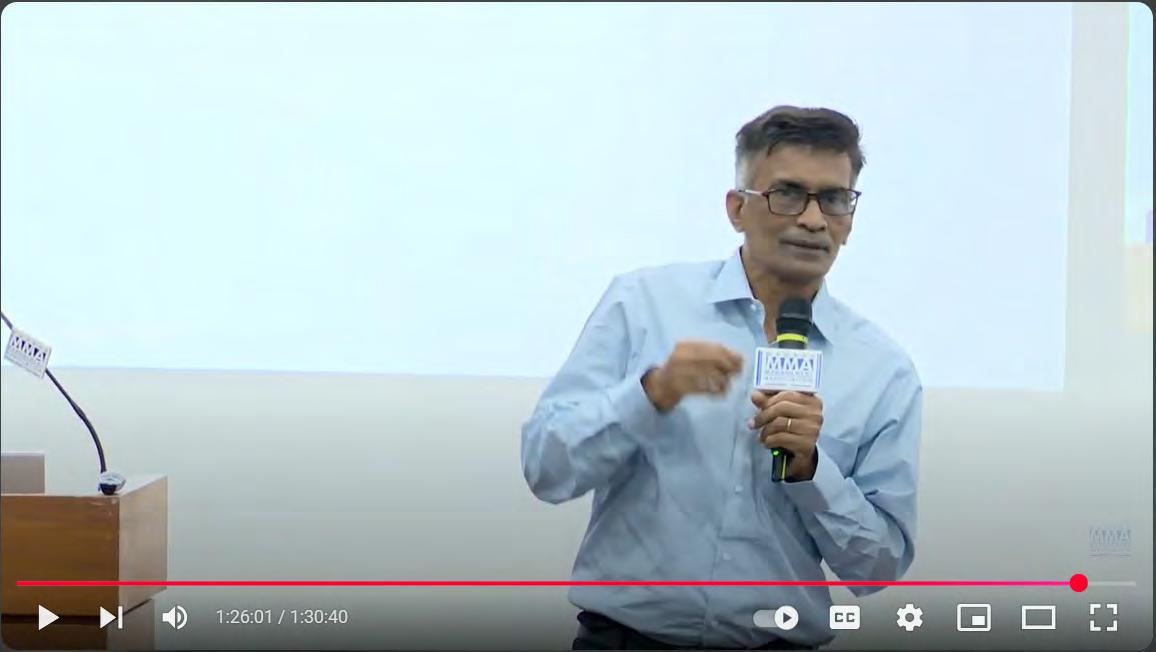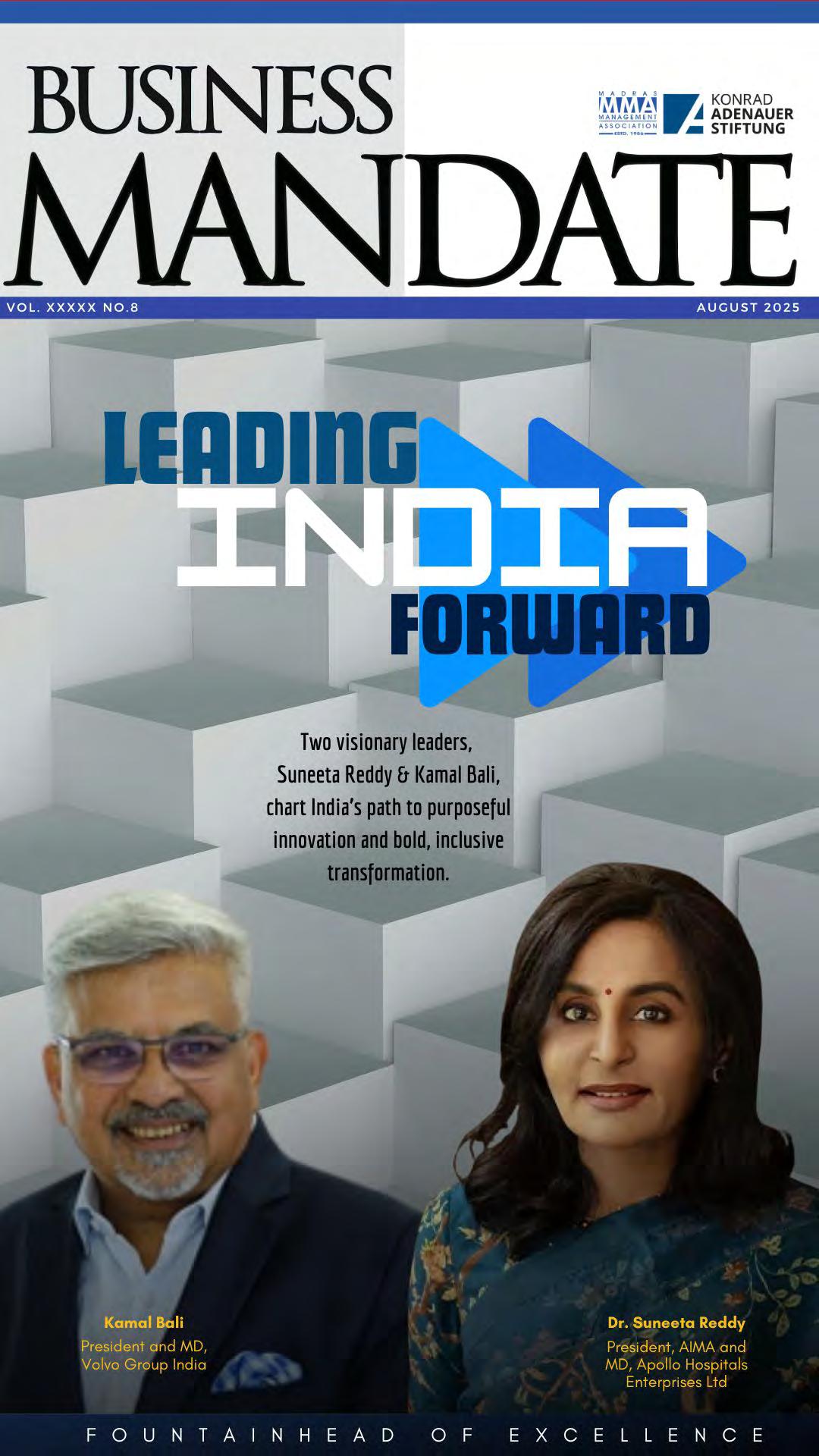



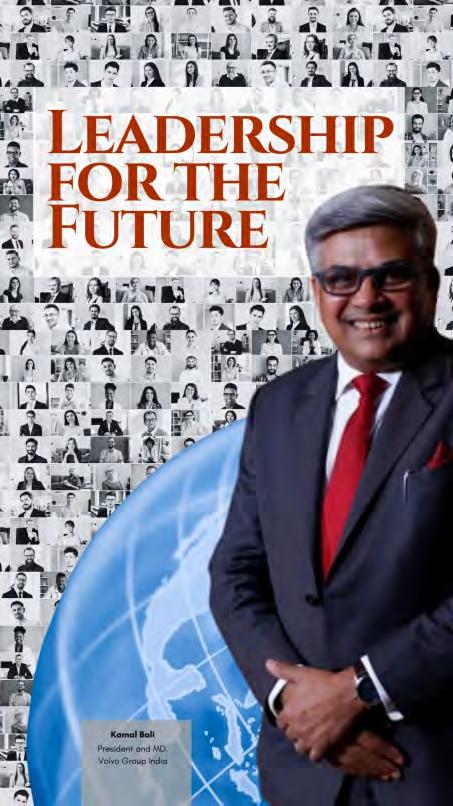
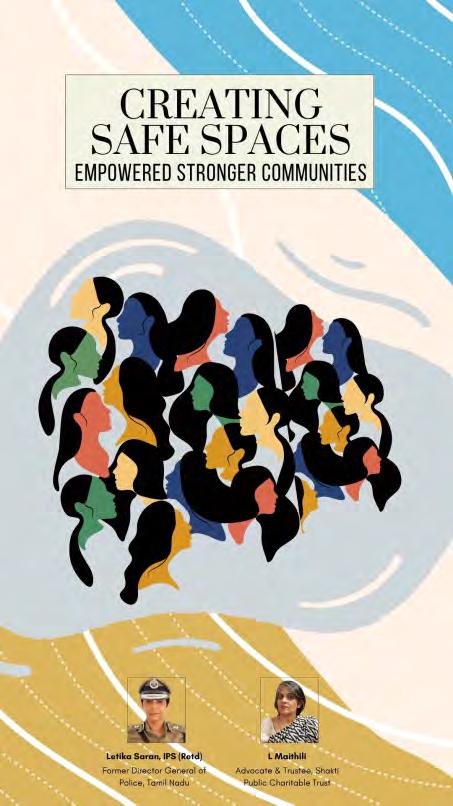


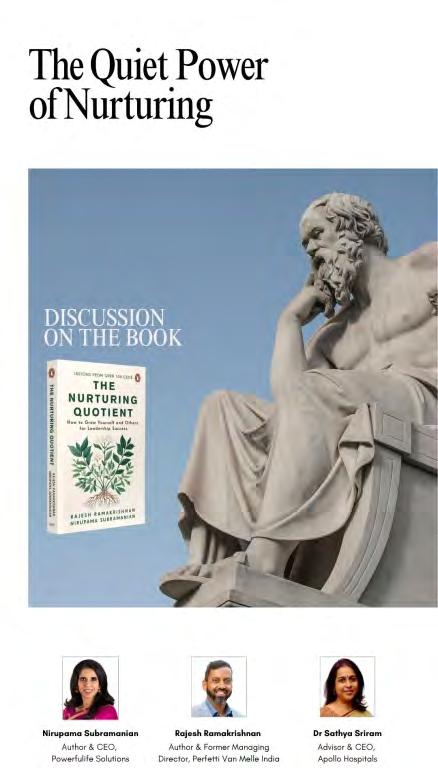

EDITOR
Gp Capt R Vijayakumar ﴾Retd﴿, VSM
READERSHIP OUTREACH
Gp Capt Dr R Venkataraman ﴾Retd﴿
Sundar R
Vakeeswari M
DESIGN
D Rajaram, Tayub Refai

MADRAS MANAGEMENT ASSOCIATION
Management Center, New No.240 Pathari Road, ﴾Off Anna Salai﴿, Chennai 600 006

Ph:044‐2829 1133 / Email:mma@mmachennai.org | mandate@mmachennai.org | www.facebook.com/mmachennai
EDITORIAL
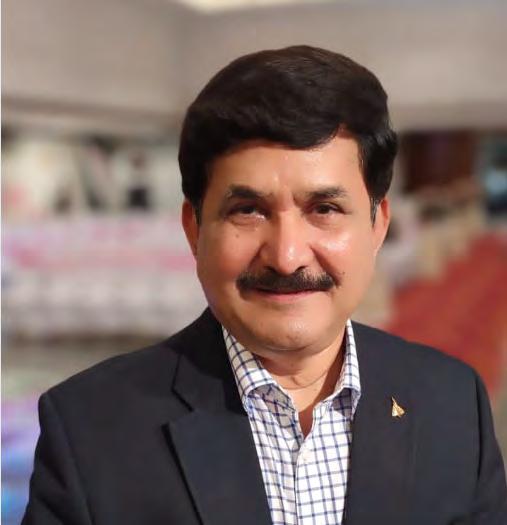
EmbarkingonaNewChapter
As we turn the page following this year’s MMA Annual General Meeting (AGM) and the Managerial Excellence Awards, I am filled with immense pride and gratitude. The event stood out not only for its impeccable organisation but more so for the vibrant participation of our members, whose continued support fuels MMA’s journey of excellence.
A key highlight was the address by Dr. Suneeta Reddy, President, AIMA & Managing Director, Apollo Hospitals. Her bold call to shift from efficiency to evolution challenged us to pursue breakthrough innovation, purposeful risk-taking, and a recalibrated growth mindset to unlock India’s true potential. Complementing this vision was Mr. Kamal Bali,
President & MD, Volvo Group India, who offered thought-provoking insights on reimagining India’s trajectory through purpose-led leadership, trust, sustainability, and collaborative progress.
The AGM also marked the launch of several landmark initiatives: Volume 2 of “Turning Points,” a special issue of Business Mandate, and MMA’s new Learning Management System (LMS)—each designed to enrich our members’ experience and engagement. The response was overwhelmingly positive.
This edition features an article capturing the essence of the Chief Guest’s address, along with a link to the full video. We also invite you to revisit the video presentation from the AGM, spotlighting MMA’s key initiatives and milestones in 2024–25—a collective achievement made possible by our dedicated members and Managing Committee.
Click to read. Click to watch. And most of all—thank you for walking this journey with us.
CHANGE OF GUARD
A new chapter has begun at MMA with the announcement of the Managing Committee for 2025–26 during the Annual General Meeting held on July 4, 2025. It is both an honour and a privilege to collaborate with this distinguished team of leaders.
At the helm is our new President, Mr. Lakshminarayanan Duraiswamy, Managing Director, Sundaram Home Finance Ltd. He is joined by a dynamic mix of seasoned professionals and fresh entrants, each bringing a wealth of corporate experience and a shared
commitment to excellence. Their collective wisdom and leadership will be instrumental in steering MMA toward even greater accomplishments.
As we step into this new term, we do so with renewed purpose and unwavering determination. With the continued support of our valued members and wellwishers, we are confident in our ability to achieve our goals—and exceed expectations.
JOBS, OPPORTUNITIES & UP-SKILLING – A UNIQUE MMA INITIATIVE
The India Employment Report 2024 paints a stark picture—83% of India’s unemployed are youth, and twothirds of them hold secondary or higher education qualifications. Paradoxically, the unemployment rate among college graduates is nearly 30%, far exceeding that of illiterate youth. This troubling mismatch between education and employability, compounded by the fact that less than 5% of youth receive formal vocational training, underscores the urgent need to reform our education-to-employment pathways.
In this context, MMA has been actively championing skill development through a range of initiatives— especially for students in Tier 2 and Tier 3 cities. Our Learning Management System (LMS) empowers learners to upgrade their skills at their own pace, with curated programs like The Nurturing Quotient, The Future of Mobility, and How to Be the Best Leader. These efforts reflect our commitment to bridging the employability gap and promoting both career readiness and leadership growth.
India stands at a critical juncture. Without bold interventions in education, vocational training, and
Having made certain allowances to the UK, India may now face demands for even greater market access or regulatory alignment in its discussions with the EU and the US.
digital literacy, millions will remain locked out of meaningful employment. At MMA, we remain steadfast in our mission to deliver high-quality, industry-relevant programs that foster continuous learning and futureready talent.
INDIA’S TRADE DIPLOMACY: LEARNING FROM THE UK AGREEMENT
The recently signed India–United Kingdom Comprehensive Economic and Trade Agreement (CETA) reflects a pragmatic and strategic approach to bilateral trade between two large economies with mutual interests. The agreement illustrates the delicate balance of give-and-take required when nations of comparable economic size negotiate long-term trade partnerships.
What makes this deal particularly significant is that it could serve as a template for India’s future negotiations with larger global blocs such as the European Union and the United States. The pattern observed in such negotiations is clear—the larger the counterpart economy, the deeper the concessions expected. Having made certain allowances to the UK, India may now face demands for even greater market access or regulatory alignment in its discussions with the EU and the US.
As India steps up its role in the global economic landscape, this deal signals a new phase in trade diplomacy—one that calls for strategic alignment of domestic priorities with global expectations. The India–UK FTA may well be a curtain-raiser for more complex negotiations to come in future.
HACKATHONS AND HEALTHCARE: A NEW ERA OF MEDICAL INNOVATION
The world of medicine is evolving at an unprecedented pace, driven by breakthroughs in artificial intelligence, digital health, and personalized care. Yet, ironically, many medical professionals remain on the periphery of this innovation revolution. As engineers and entrepreneurs increasingly shape the healthcare landscape, doctors often find themselves relegated to service delivery, rather than leading as innovators.
This paradigm must change. The white coat should symbolize not just clinical excellence, but also visionary leadership in shaping the future of healthcare. To this end, MMA, in collaboration with Apollo Hospitals, is proud to launch the National Infectious Disease Hackathon—a first-of-its-kind initiative in India that puts clinicians at the center of innovation.
Focused on real-world, hospital-priority challenges in infectious disease management, the hackathon aims to deliver cost-effective, scalable, and directly implementable solutions across domains such as infection control, clinical workflows, patient education, and digital upskilling. This path-breaking initiative not only strengthens MMA’s role in healthcare thought
While AI can enhance learning, it must not replace the intellectual struggle that lies at the heart of meaningful knowledge development.
leadership, but also paves the way for meaningful member engagement, multi-sectoral collaboration, and impactful societal change.
NEW INCOME TAX LAW: REFORM WITH RESPONSIBILITY
The proposed new Income Tax Bill has been broadly welcomed by Indian taxpayers for its intent to simplify and modernize tax governance. However, it has also sparked concerns—particularly over digital privacy and the implications of Section 247, which many fear could infringe on individual rights.
To maintain public confidence, it is imperative that safeguards are built into the system. Section 247 must not become a tool vulnerable to misuse. The threshold for search and seizure operations must be set high to uphold the spirit of the reform—anchored in the fiveletter foundation of the proposed law: TRUST.
In this context, MMA has launched a dedicated lecture series under the MMA CFO Forum to keep members informed and empowered. The first in the series—“Capital Gains Rewired: What You Must Know Before Filing ITR for FY 2024–25”—featured expert insights from Mr. M P Vijayakumar, Executive Director & Group CFO, Sify Technologies, and CA T G Suresh, Partner, Suresh and Balaji. For a deeper understanding of
capital gains provisions and updates, we encourage members to read the analysis and watch the session recordings.
Click to view.
AI & THE ART OF LEARNING: MMA EMPOWERS THE NEXT GENERATION
Artificial Intelligence is a powerful tool—but in education, its use must be judicious, purposeful, and ethical. While AI can enhance learning, it must not replace the intellectual struggle that lies at the heart of meaningful knowledge development. We must encourage students to think critically, act responsibly, and engage deeply with content—not merely consume or replicate it. AI must be a support,neverasubstitute.
It is imperative that students must be exposed to the emerging tools, skills, and technologies shaping the future of work. In this spirit, MMA is proud to present the 24th AllIndiaManagementStudentsConvention, scheduled to be held on Monday, 27th October 2025 at the IIT Research Park Auditorium, Chennai. The convention aims to equip future leaders with the agility, mindset, and digital readinessneededtothriveinafast-evolvingworld.
As a prelude, several competitions have been launched, offering students a platform to showcase their potential and win accolades. We especially invite students to compete in the prestigious “Chanakya – The Mastermind”, with a grand prize of Rs.1 lakh. We urge you to peruse the convention brochure, register early, and make the most of this highly subsidized, high-impact learningopportunity.
Click to join the competitions.
A GRAND VICTORY FOR INDIAN CHESS: DIVYA DESHMUKH CREATES HISTORY
Indian chess celebrated a landmark moment as 19year-old Divya Deshmukh triumphed at the prestigious FIDE Women’s World Cup held in Batumi, Georgia. In a thrilling all-Indian final, Divya defeated the legendary Koneru Humpy in the tiebreakers to clinch the title— becoming India’s first-ever Women’s World Cup winner.
This remarkable achievement is not only a personal milestone for Divya but also a proud chapter in India's growing dominance in global chess. Her poise, strategic brilliance, and resilience under pressure are a testament to the depth of talent emerging from the next generation of Indian sport.
Congratulations, Divya! Your victory inspires a nation and opens the door to many more to follow in your footsteps.
In this issue, I am delighted to bring you a diverse collection of thought-provoking articles: “Four Essential Ingredients for Marketing Success”, “Creating Safe Spaces – Empowered, Stronger Communities”, and “The Greatness Guide: Maximize Your Gifts.” Each piece offers valuable insights and inspiration—please read on, reflect, and be inspired.
PENALTY BY DESIGN? TRUMP’S TARIFF TEST FOR INDIA
In a move that could reshape the contours of IndoUS trade relations, US President Donald Trump has announced a 25% tariff on imports from India, effective July 2025. While the headline figure may appear manageable, Trump’s remarks hint at a deeper blow—an
additional but unspecified "penalty" that could complicate matters further.
This unexpected move appears less an act of pure protectionism and more a strategic push to expedite a trade deal. However, any rush into an asymmetrical agreement may compromise India's long-term trade interests. It is imperative for India to weigh its options carefully and not succumb to pressure tactics dressed as diplomacy.
A breakthrough now seems unlikely in the near term. But as India formulates its response, it must ensure that sovereign decisions — especially concerning key sectors like jewellery and energy — are guided by national interest, not by shifting currents in Washington.
By setting the record straight and displaying poise, India has shown maturity and signalled that it won’t get rattled. A near-term setback in US-bound exports may be better than inking a bad agreement that locks us in—even if it makes them annoyed.
As always, we would be happy to hear your views, comments, and suggestions.
Happy reading!

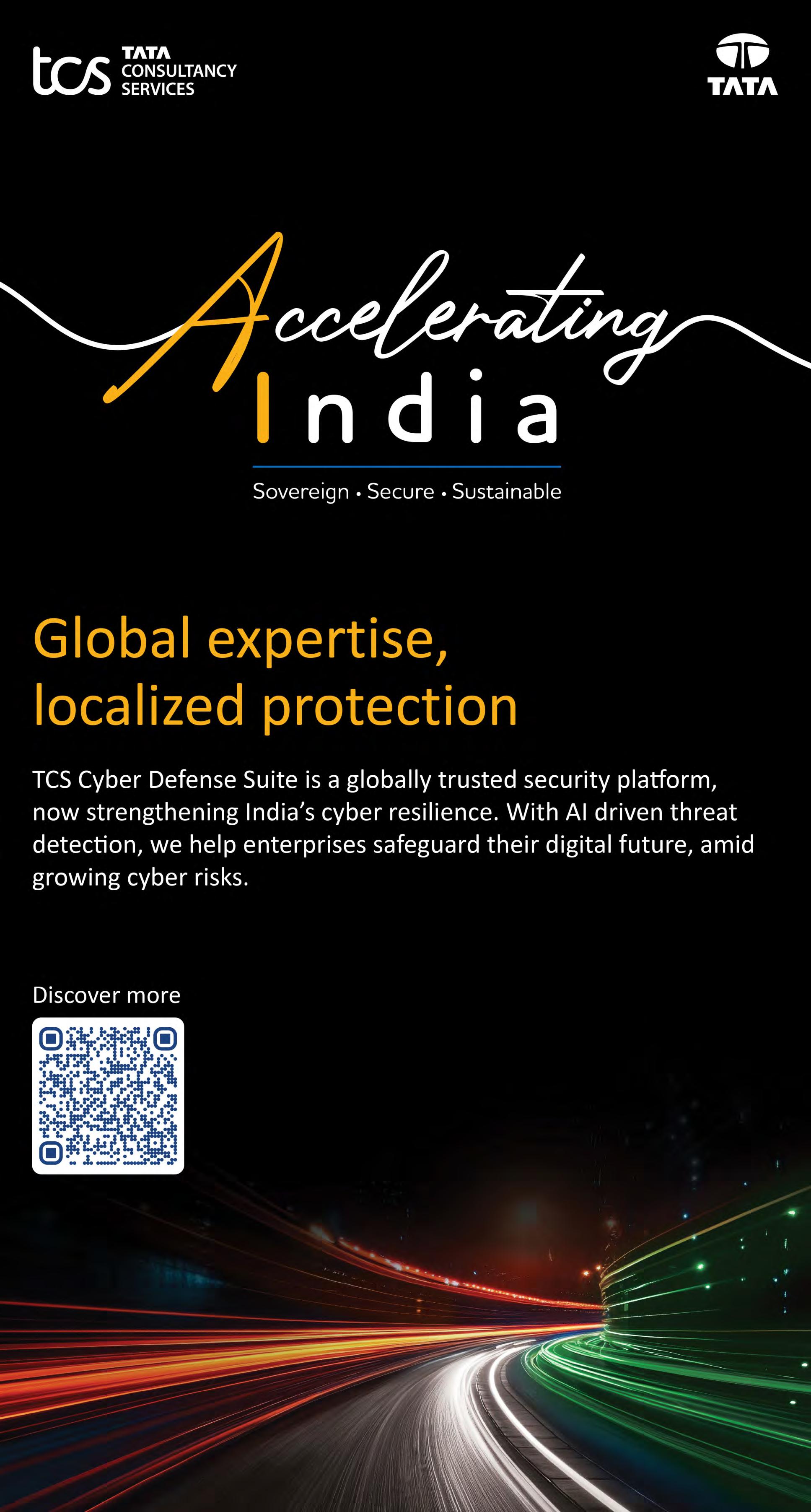
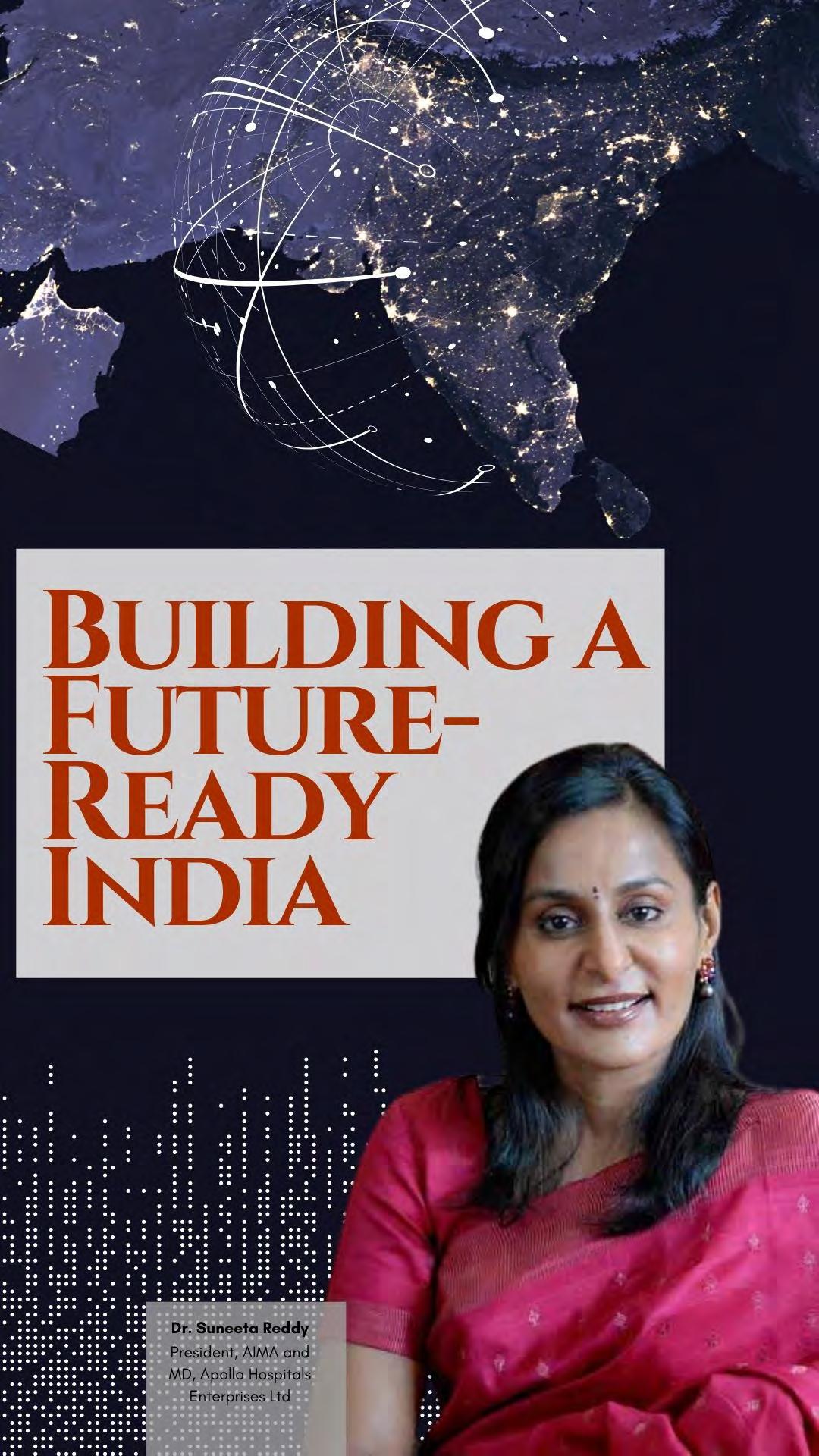
In her valedictory address at the 69th MMA AGM, Dr. Suneeta Reddy, President, AIMA and MD, Apollo Hospitals Enterprises Ltd, urges India’s leaders to embrace bold innovation, purposeful risk‐taking, and a growth mindset to shape a future‐ready, inclusive, and globally impactful nation
As I reflect on where we are succeeding and what excellence truly means, I ask: are we managing for efficiency, or are we preparing for evolution? Because the future is changing—and it’s changing rapidly. Are we simply celebrating past excellence, or are we refining and transforming ourselves for what lies ahead? I believe it is time to recalibrate and get ready for the future.
There is a young generation that thinks differently. There is a population seeking jobs. And there is another generation that will have to live in an India with a sustainable and healthy environment. This is what we must prepare for. We need to be futureready and future-skilled.
As managers, we attend annual meetings, AOP reviews, and budget discussions—but just pause and reflect. Even the fundamentals of finance have evolved
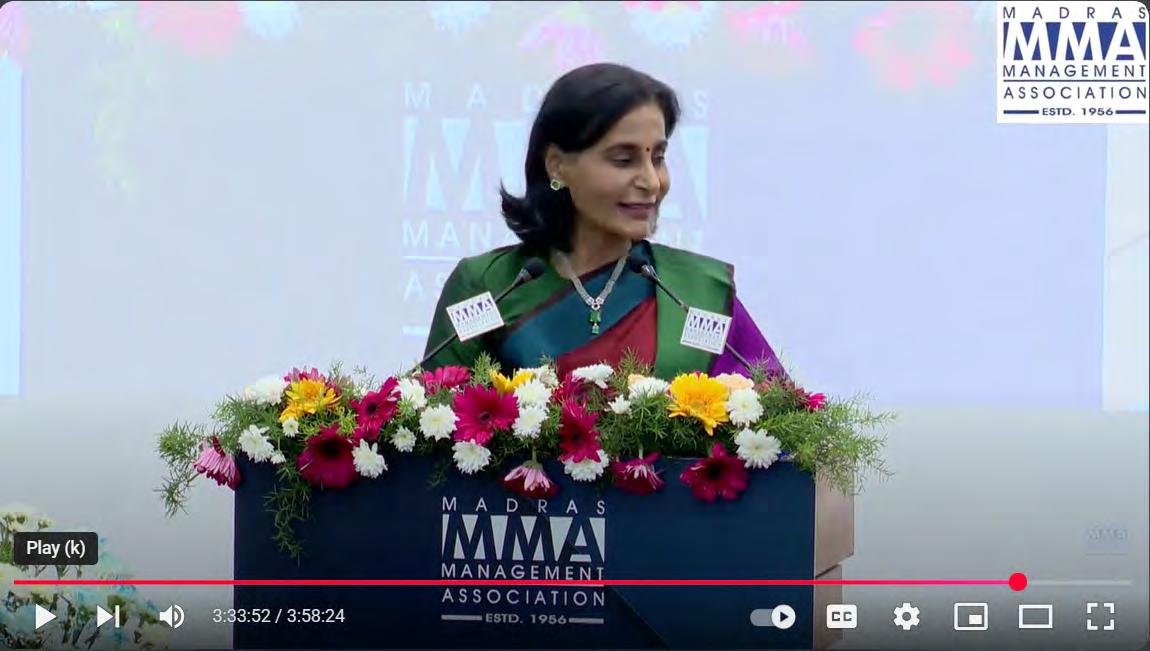
dramatically. It was in the 6th century that Aryabhatta introduced the concept of zero. In 1498, double-entry bookkeeping emerged. And today, we've moved beyond spreadsheets into real-time accounting, powered by AI and chatbots. The very nature of accounting has transformed.
And this shift is not limited to finance. It’s happening across every domain. Look at mobility. How many of us still think of car ownership as essential? Who imagined metro travel becoming the norm, or space tourism becoming a leisure activity? Today, people are planning vacations in space. Elon Musk completely changed the way we perceive mobility. The question is—how many of us in India are thinking that way? Because we are capable. We’ve always been strong in process innovation—making things cheaper and more accessible.
MOVE BEYOND FRUGAL INNOVATION
Take healthcare, for instance. When I returned to India 40 years ago, the average life expectancy was 56
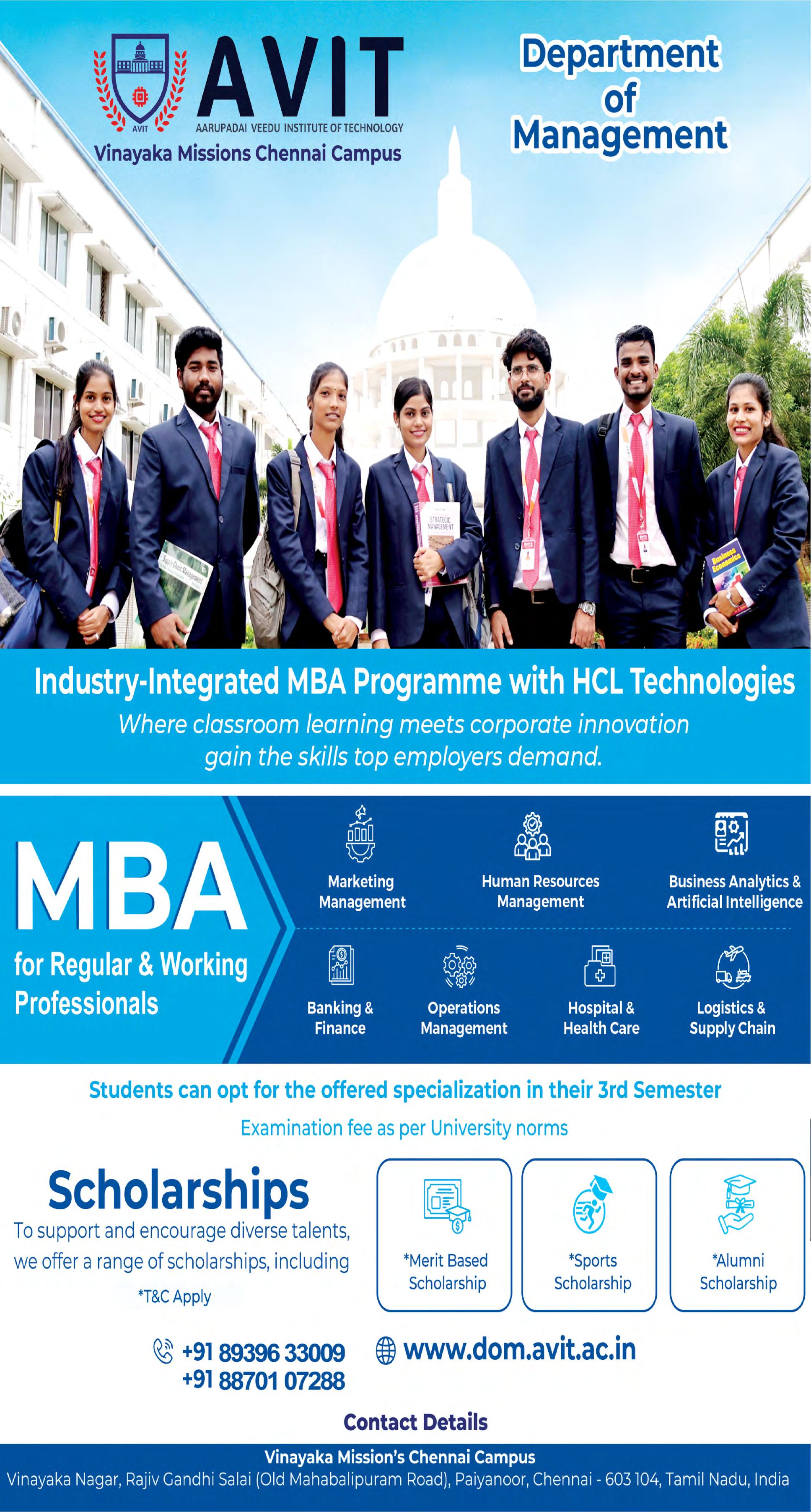
The U.S. spends 16% of its GDP on healthcare. The UK’s NHS has a budget of $270 billion. Yet, citizens in both countries often express dissatisfaction with their healthcare systems.
years. Today, it is 76. While corporate healthcare has certainly contributed to this transformation, I believe it is the convergence of education, biological understanding, and artificial intelligence that is shaping this new era. These three powerful forces— knowledge, technology, and a deep-seated curiosity to do what is right—are intersecting. And it is at this intersection that positive, transformative change occurs.
Our strength in process innovation is evident when you look at many of India’s successful businesses. We are pioneers in frugal innovation. But now, we must go beyond frugality. The reasons are obvious. India spends just 0.7% of its GDP on research. China, by comparison, spends 3.5%—and on a significantly larger GDP. So when something like ChatGPT emerges after an investment of over $100 million, China’s DeepSeek comes out with an AI model, with a fraction of that cost. You can see the difference that investment in research makes. The impact of those outcomes—those innovations—is enormous. That’s the true difference between incremental improvement and breakthrough innovation.
As we consider where the most meaningful
change is happening, I believe that certain critical areas stand out—healthcare being one of the most impactful. The implications of having a digital twin on which doctors could simulate treatments and determine what works best—before applying it to the actual body are profound.
INDIA’S UNIQUE OPPORTUNITY
Globally, we’re seeing breakthroughs. For example, there’s now a vaccine for cervical cancer. And our government is rolling it out faster than any other country in the world. Consider healthcare spending: the U.S. spends 16% of its GDP on healthcare. The UK’s NHS has a budget of $270 billion. Yet, citizens in both countries often express dissatisfaction with their healthcare systems.
Now look at India. The government has linked 700 million people to Aadhaar. Of those, 450 million already have their own personal health records. That’s the scale we’re talking about. The government has achieved this at a fraction of the cost—just $8 billion. Despite our low spend, we’ve delivered high scale and tangible impact. This, I believe, is India's unique opportunity: to teach the rest of the world how to achieve meaningful outcomes with limited resources.
Even at the G20 meetings, one of the key takeaways was the world’s interest in learning from our digital achievements—not just in healthcare, but across sectors: in Aadhaar, in digital identities, in the way we’ve revolutionised banking. We are reaching the last mile. Clearly, India has the potential to make a significant global impact. But to achieve that, we must
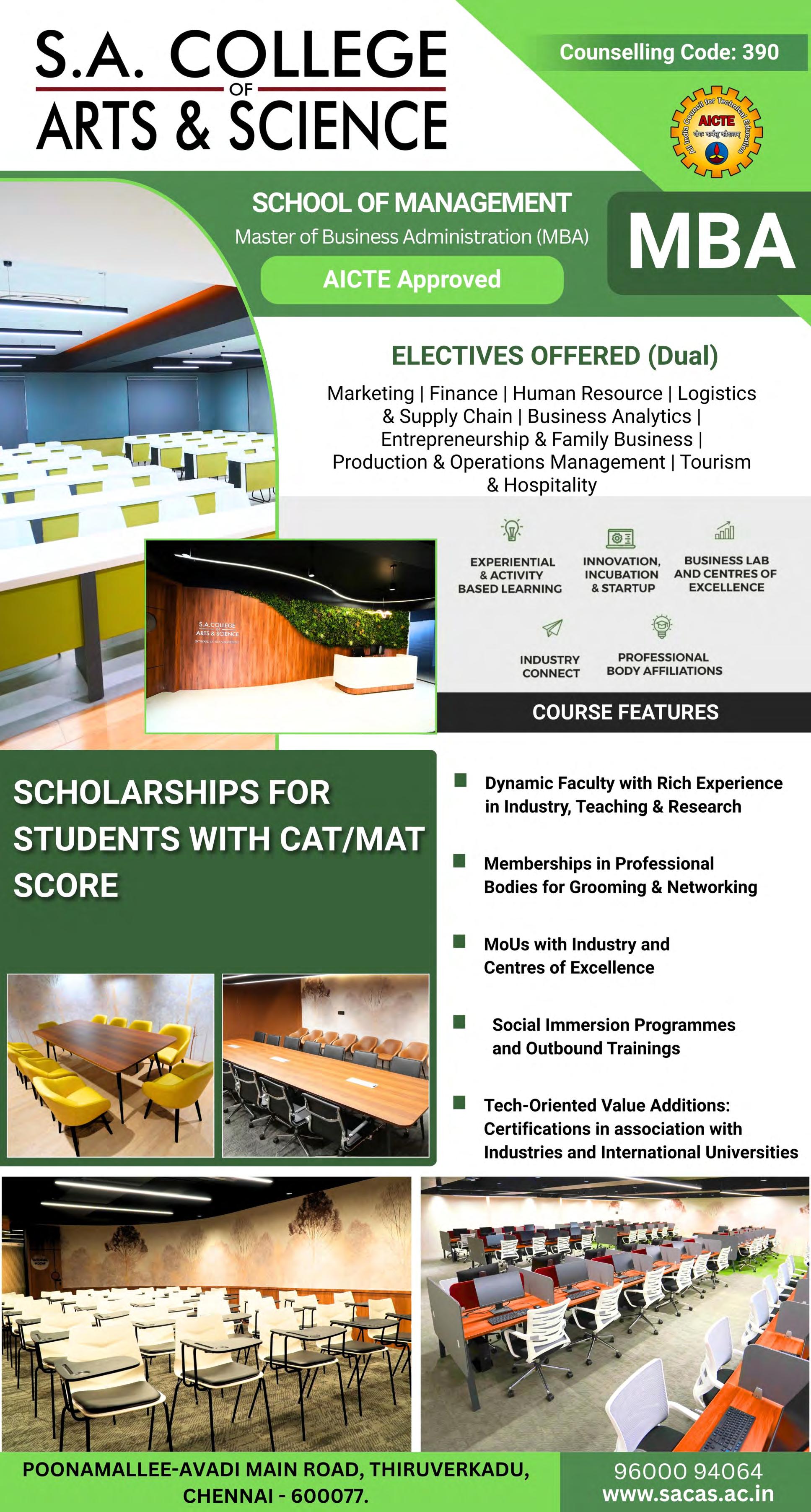
What’s crucial is that, within our own spheres, we must continue to learn, continue to lead, and, most importantly, keep our minds open.
first take the initial steps. When we talk about becoming a $10 trillion economy—I'm not even going into the $47 trillion opportunity just yet—we must focus on reaching that first milestone.
BE OPEN TO CRITICISM
I believe there are small but meaningful steps each of us can take. What’s crucial is that, within our own spheres, we must continue to learn, continue to lead, and, most importantly, keep our minds open. An open mind means being willing to listen—especially to those who challenge us. Often, criticism is the best opportunity for growth, if we can learn from it. I’m aware that it’s often hard to speak up—even when we have good ideas. That’s why we must foster openness to new ideas, especially from voices that are not always heard.
There’s something I’ve noticed in my travels, particularly when I visit Delhi or go abroad. When people realise I’m from the South, they say, “Ah, you’re from the South.” I tell them, “I am a proud South Indian. I may not have the accent, but my roots are firmly in the South.”
What does the rest of India say about us? They acknowledge our excellence, our integrity, and our
The ability to take calculated risks—especially for a noble purpose—is what sets true leaders apart.
intelligence. But there’s one stereotype that persists: that South Indians don’t take risks. They say, “Name four or five big risk-taking companies from the South.” Of course, those people haven’t met the South Indian entrepreneurs, managers, and leaders. They haven’t met you.
RISK-TAKING WITH A PURPOSE
The ability to take calculated risks—especially for a noble purpose—is what sets true leaders apart. Let me share a real example from my own life. When my father proposed setting up the Proton Therapy Centre, it was a Rs.1,200 crore project. I remember asking him, “Dad, how can we put a single project of 1,200 crores on our balance sheet—with one machine alone costing 450 crores?”
And he simply said, “Don’t worry. Don’t worry about profits. That’s not the point.” What convinced the board and all of us to move ahead was the purpose—treating cancer. That purpose made the risk worthwhile. When we take a risk with the right intention and a clear purpose, we don’t need to fear failure. Profitability may not be immediate, and yes, the learning curve will be steep—especially for pioneers—but the impact on society will be longlasting.
This is the kind of risk I believe we must be

willing to take if we are ever to reach our true potential. As I look around the world, we all know of the extraordinary Indian leaders who have made their mark globally: Satya Nadella, Sundar Pichai, Indra Nooyi, and Ajay Banga at the World Bank. So many Indians have left India and become global icons. The question now is: can we take that same boldness and risk-taking spirit and apply it here, at home?
There’s a personal learning in all of this for me, and I believe it’s this: we must create an environment a culture—that encourages curiosity and inspires people to drive meaningful change. Let’s not settle for incremental improvements. When I see 10% growth, I ask myself, why just 10%? When I see 6.7%, I’m reminded that to reach a $10 trillion economy, we need to sustain 8% GDP growth.
PER-CAPITA INCOME MATTERS
We need a clear plan—and we need to think differently to get there. People say we’ve overtaken Japan, but in truth, we haven’t. Our economy stands at $3.8 trillion. That’s far from where Japan is. What truly matters is not where we rank, but the impact we create.
Consider our per capita income—it’s about $2,500. Every time I meet with economists and policymakers in Delhi, I emphasise that while GDP growth is important, real progress comes from growing per capita income. That is what changes lives. And the only way to achieve that is through re-skilling vocational training, continuous learning, and capacity building at every level.
Whether it's in energy, the environment, or defence— things are evolving at a pace that demands our attention.
We’ve already seen remarkable change in sectors like agriculture. Just look at TAFE and the innovations it’s driving. Think about how far we’ve come in the space sector—we’ve sent a mission to the dark side of the moon.
GO FOR THE MOON, BUT SOLVE A PROBLEM
When I visited Ahmedabad recently, someone from the Sarabhai family shared a powerful quote by Dr. Vikram Sarabhai. He said: “I will do anything to help this institute flourish, but when we go to the moon, it should not be out of ego. We should go to solve a human need.”
And that’s exactly what we’re doing. Why go to the moon? Because we are searching for rare minerals resources that are increasingly scarce on Earth. That’s a purposeful mission. That’s when innovation becomes truly meaningful.
Whether it's in energy, the environment, or defence—things are evolving at a pace that demands our attention. We must be on the edge of that change. If we’re not, we risk falling behind. Imagine an Indian fighter pilot flying a Rafale—and on the other side, a Chinese J-10 aircraft ready to outmatch it. Staying ahead is no longer optional. Learning and evolving are now survival tools.
FOCUS ON VALUE CREATION
Historically, India has been fortunate in terms of capital—money has always flowed into the country. But intellectual property? That hasn’t flowed in proportion. Take the example of Foxconn. According to the news, 300 Chinese engineers working on the project were recalled to China—and this disrupted Foxconn’s operations in India. Remember, Foxconn manufactures Apple phones not just for India, but for the world. That disruption highlights a deeper issue: our position in the value chain.
China is currently delivering 38% value engineering capability. India? Just 20%. That’s the gap. And that’s the opportunity. We must move up the value chain—because when we do, we don’t just grow GDP, we elevate the lives of every Indian by increasing per capita income. That’s how we build a better future.
GROWTH MINDSET OVER GROWTH CHARTS
So, to all of you leaders in this room: you have immense responsibility. But also immense potential. I want to leave you with this thought—be optimistic about the future. Believe in your power to create change. Because as leaders, thought leaders, and influencers in your own spheres, you can make a profound difference.
But as you pursue change, do it for the right reasons. The most powerful legacy we can leave behind is not growth charts and balance sheets—it is a growth mindset. That mindset is what will define us. It’s what will prepare the world for the next generation of leaders.
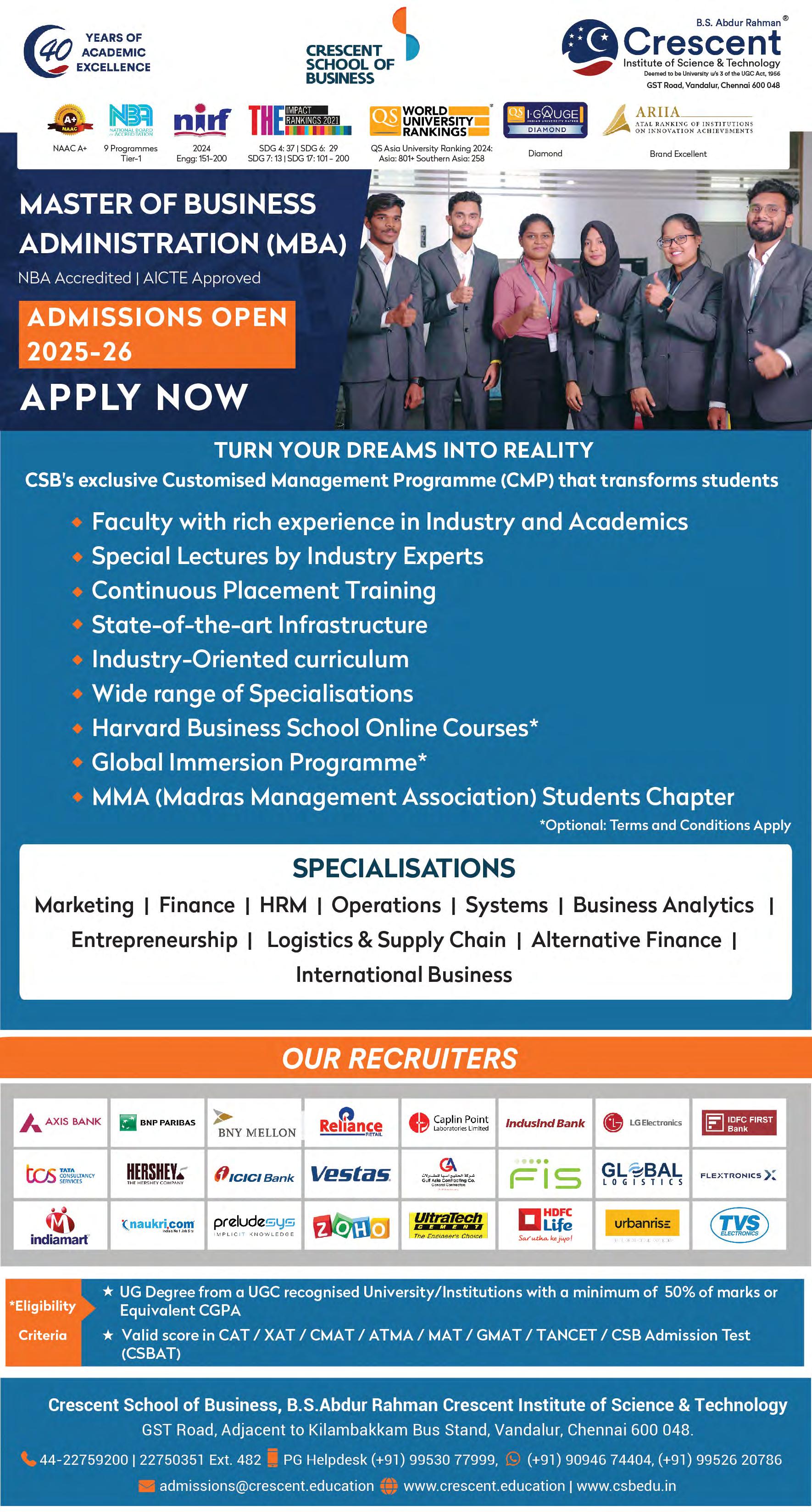
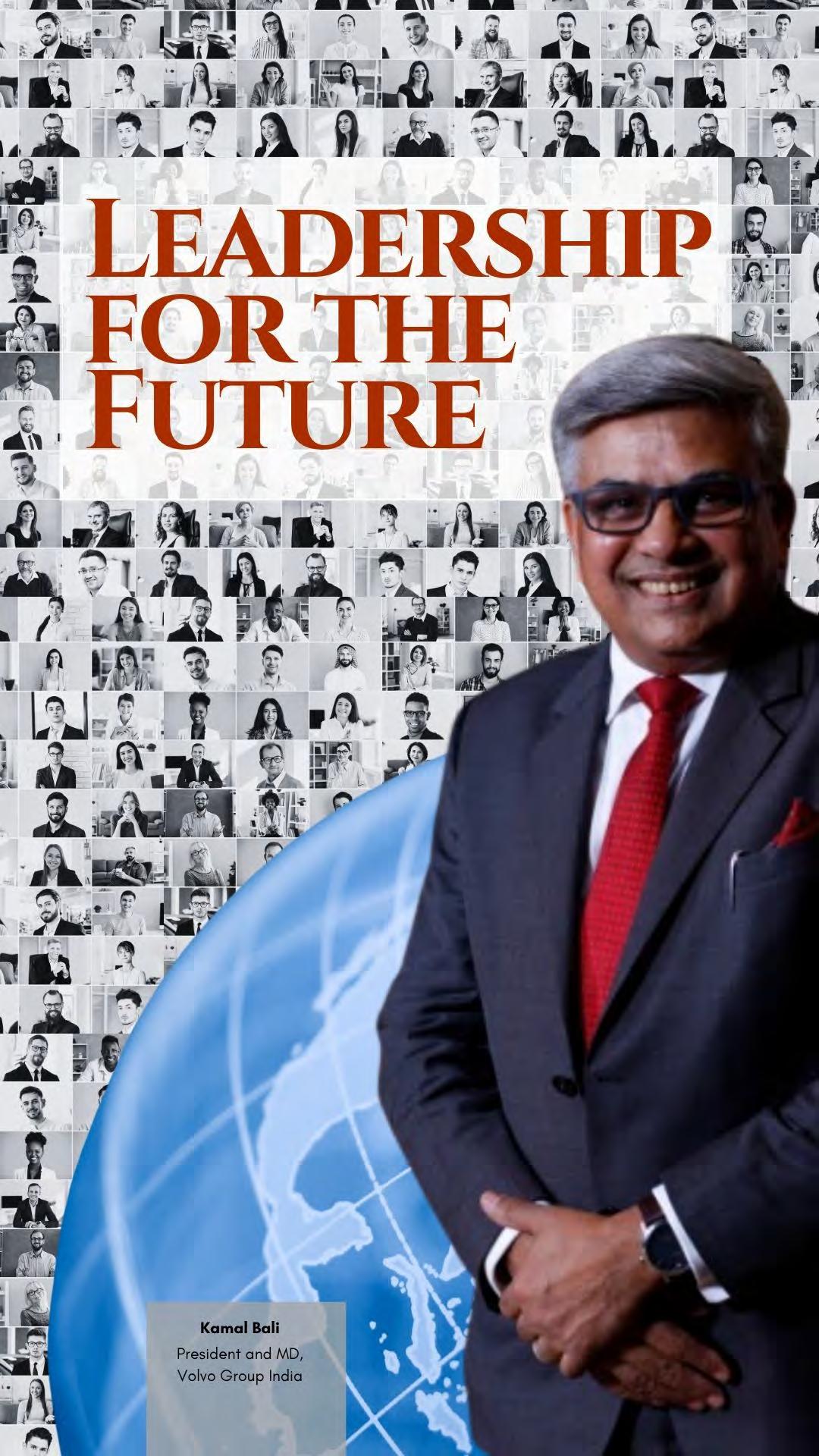
Kamal Bali, President and MD of Volvo Group India, delivered this Inaugural Address at the 69th AGM, urging future‐ready leadership in a transforming India.
Let me share with you the key shifts we are witnessing in the world of business and commerce and about what constitutes the "India Advantage," how we can leverage these opportunities, and how we can navigate the many challenges that lie ahead through entrepreneurial leadership and managerial excellence.
THE FOUR FORCES OF TRANSFORMATION
The shifts we are experiencing are significant. The so-called VUCA world—Volatile, Uncertain, Complex, and Ambiguous—is perhaps more intense now than ever before. And it might become even more so. Every industry, across sectors, is undergoing massive transformation. This transformation is being driven primarily by four key factors: Connectivity; Digitalisation; Automation; and Energy Transition. These four forces are not just disrupting individual sectors—they are triggering ecosystem-wide shifts. That makes it even more complex. We are now required to connect the dots across multiple dimensions and disciplines.

Geopolitical uncertainties are also sending tremors across the globe. Then there is social media— giving people borderless platforms for expression. Be it ideas, suggestions, or news—right or wrong—it spreads globally in seconds. That too needs managing. In fact, the kind of shifts we are witnessing today are possibly unprecedented in the past century.
I was listening to a podcast where a speaker observed that despite advances in medicine, we still lack cures for diseases like cancer, type-1 diabetes, and Parkinson’s. He was placing his hopes on biological AI—saying that soon we may have digital twins of our cells, enabling scientists to test potential treatments virtually. That is the reality of where we’re headed.
In my own industry, think about the internal combustion (IC) engine that was perfected over 120 years. Imagine the engineers who spent their careers mastering that engine—how must they feel seeing the shift toward battery electric vehicles? Now, we talk about software-defined vehicles. The entire paradigm is shifting. Entirely new skill sets are being demanded.
The future of globalisation is uncertain.
And this is happening not just in automotive—it’s happening across all sectors: agriculture, art, culture— everywhere. Technology is changing the behaviour of every industry.
FOUR SEISMIC SHIFTS
If I were to summarise these into four seismic shifts, here’s how I would put it:
The Return of Big Power Conflicts: For the first time since World War II, we are seeing the reemergence of major geopolitical tensions. The Russia–Ukraine war, the Middle East crisis involving Israel, Iran, and Hamas, and tensions in Asia, particularly Taiwan and China—these are no longer regional issues; they have global implications. Even in India, we are affected.
The Crisis in Economic Globalisation: Globalisation, which truly gained momentum 30 years ago and greatly benefitted China, is now facing serious challenges. We see a shift toward protectionism, trade barriers, and redefined supply chains. Trump’s tariff regime and the rise of “economic nationalism” are part of this broader trend. The future of globalisation is uncertain.
The Emergence of AI and Exponential Technologies: Artificial Intelligence and allied tech tools are redefining the future of industry. This calls for a sense of urgency. And here, India has the
opportunity for a second-mover advantage, provided we act decisively.
The Rise of Holistic Sustainability and Energy Transition: Sustainability is no longer a buzzword. Going forward, every action, policy, and business decision will be judged through a new lens: Is it economically viable? Is it environmentally responsible? Is it socially inclusive? Is it ethically sound? This integrated approach to sustainability will shape future innovation and leadership.
In the face of these four mega-shifts, we are seeing the world through a very different lens—one that requires entirely new skill sets, mindsets, and models of leadership. India is in the right place, at the right time, with the right people. As I travel across the world, I can see the sheer energy and enthusiasm in India today. It’s palpable. It’s real. And we need to leverage it.
ON A POSITIVE TRAJECTORY
If we look at the macro indicators, especially over the last six months, we can see that private sector investment is on a positive trajectory. That’s a very encouraging sign. We’re also seeing the net assets of the private sector going up—which is a very good sign. Headline inflation has come down, even falling below the Reserve Bank of India’s 4% benchmark. Rural and urban households are showing optimism in their future consumption patterns, and that is encouraging. Our current account deficit is down. Foreign exchange reserves are strong. And India’s external debt-to-GDP ratio remains low.

AUGUST
2025
THE HINDU - MMA - TAMIL NADU REAL ESTATE SUMMIT 2025
10:00 am onwards | 05-Aug-25
ITC Grand Chola, Chennai
HAPPINESS UNLOCKED: PRACTICAL STRATEGIES FOR WORK & LIFE
6:00 pm to 7.30 pm | 09-Aug-25
Tanishq, Anna Nagar
READ & GROW - THE INNER GAME OF WORK BY W. TIMOTHY GALLWEY
6:00 pm to 7:15 pm | 19-Aug-25
MMA Management Center
DISCUSSION ON THE BOOK: THE ROAD AHEAD - 2.0
6:00 pm to 7:30 pm | 23-Aug-25
TTJ Auditorium, IC&SR, IIT Madras
THE MADRAS QUIZ COMPETITION BY MURUGAPPA GROUP
2:00 pm to 7:00 pm | 24-Aug-25
MMA Management Center
THE BUSINESS BLUEPRINT: BUILDING SUCCESS FROM VISION TO VALUE
6:00 pm to 7:00 pm | 28-Aug-25
Andhra Chamber of Commerce
MMA CHAPTERS
PRESERVING AND PROMOTING SELF-CARE AT THE WORKPLACE
3:30 pm to 5.00 pm | 7-Aug-25
NCR Corporation India Pvt Ltd, Chengalpattu
DIGITAL TRANSFORMATION FOR BUSINESS GROWTH
11:00 am to 1.00 pm | 8-Aug-25
LRC Grand Stay Hall
Near Attur Bus Stand, Attur
DIGITAL TRANSFORMATION FOR BUSINESS GROWTH
6:30 pm to 7.30 pm | 8-Aug-25
Hotel Golden Palace
Trichy Main Road, Namakkal
UNLOCKING SUCCESS IN A VUCA WORLD
3:00 pm onwards | 11-Aug-25
Sona School of Business and Management
Salem
PRECISION IN MOTION: QUALITY AS A DIFFERENTIATOR IN A COMPETITIVE MARKETINSTALLATION OF OFFICE BEARERS
6:00 pm to 7.30 pm | 13-Aug-25
Hosur Industries Association, Hosur


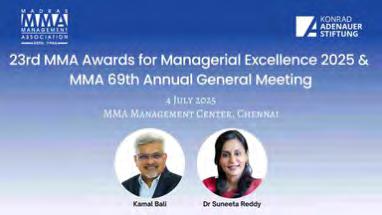
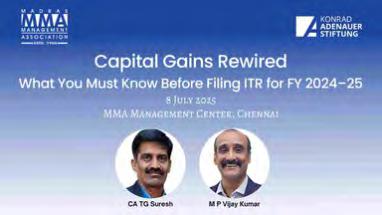
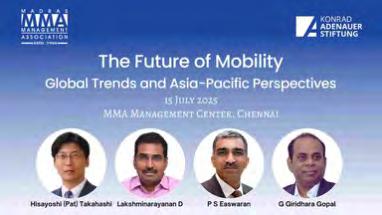
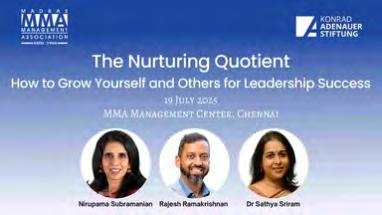
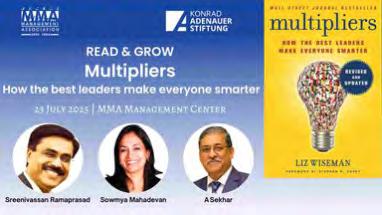
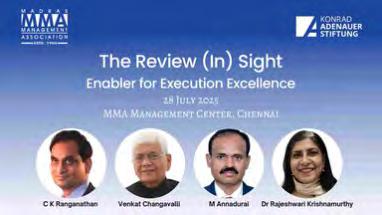

But the real story is this: over the next 10 to 15 years, India is projected to grow at more than twice the rate of the rest of the world.
India’s services trade has consistently acted as a strong cushion—especially when we face challenges on the manufacturing front or with imports like crude oil. It gives our economy resilience during times of external stress. Now, if we look at India’s overall growth story, we’re on track to soon become the thirdlargest economy in the world. We talk about it often. Of course, our per capita income remains relatively low—and that’s where we need to move upward.
But the real story is this: over the next 10 to 15 years, India is projected to grow at more than twice the rate of the rest of the world. While global growth is expected to hover around 2.5–3%, India is likely to grow between 6.5–7.5% annually. That means India’s contribution to global growth will be 2.5 times higher than it is today. That’s a major shift.
DON’T COMPARE WITH CHINA
However, unlike China, which grew primarily on the back of exports—with only about 30% of its economy driven by domestic consumption—India’s growth story will be different. Over 60% of our GDP will come from domestic consumption. Our growth will be powered by rising workforce participation, increasing household incomes, and expanding consumption. This growth may not always be
We are fundamentally very different economies, with very different structures and trajectories.
dramatic, but it will be organic, stable, and sustainable. That’s the Indian story. And so, it’s time we stop comparing India with China. We are fundamentally very different economies, with very different structures and trajectories.
India, in fact, cannot be defined with a single brushstroke. If we were to simplify and analyse India’s socio-economic structure, we could think of the country in three segments:
•The Affluent India – About 140 million people with a per capita income of approximately $15,000. In terms of lifestyle and consumption, this group is comparable to Australia—not in population size, of course, but in economic behaviour.
•The Aspiring India – Roughly 300 million people with a per capita income around $3,000, comparable to Indonesia in economic terms.
•Bharat– The remaining one billion citizens, with a per capita income under Rs.1 lakh per year, representing the broader, rural and semi-urban population.
These three Indias require three different approaches—three different models of engagement, policy, and development. We must tailor our strategies accordingly if we are to achieve inclusive and sustained growth. Given all these promising developments, the natural question is: Why is India in
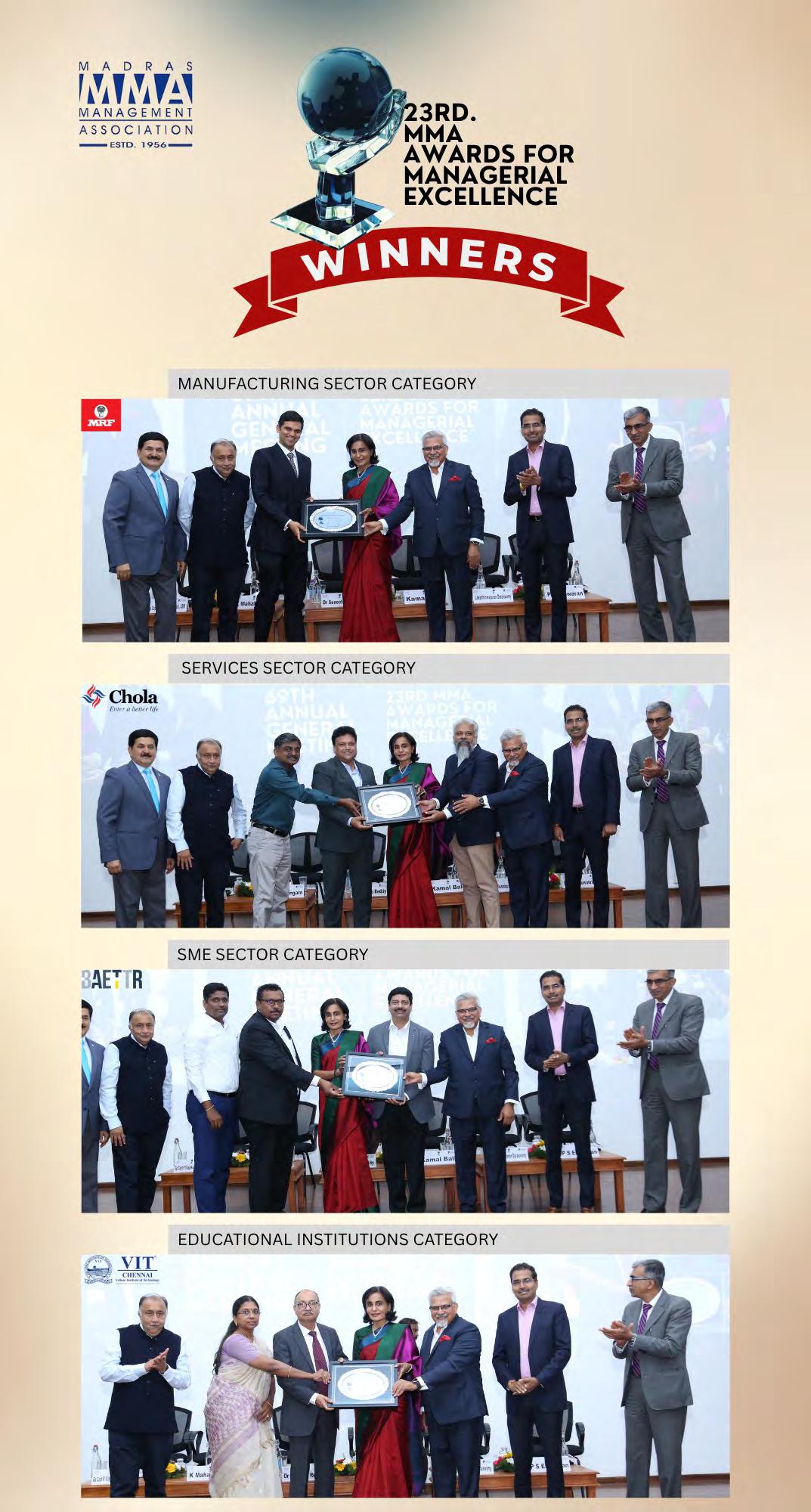
The diversity we possess is unmatched: from agriculture to AI, the spectrum of skills and potential in India is truly remarkable.
the global spotlight?
India is gaining attention not just because of its size and growth projections, but for several structural and strategic reasons: First, decisive structural reforms are underway—and more are on the way. Second, investments in capital expenditure (CapEx) are accelerating, both from public and private players. Earlier, the government used to allocate only 19% of its total expenditure to capital expenditure (CapEx). Today, that figure has increased to around 29%. This is money well spent—because CapEx builds future assets, and from these assets, we will derive sustained growth.
THE 7DS
We’re also making meaningful strides in the energy transition. Progress is evident. Add to that a young, digitally savvy population—and we have a major strength. The diversity we possess is unmatched: from agriculture to AI, the spectrum of skills and potential in India is truly remarkable. If I were to capture the key forces propelling India forward, I’d summarise them as the Seven Ds:
•Democracy
•Demography
•Diversity
•Decarbonisation
•Digitalisation
•Determination
•Dependability
These Seven Ds are shaping the India story, and I believe they will continue to be a powerful force for the future.
LEADERSHIP FOR THE FUTURE
So, what kind of leadership is required to truly leverage this India story? A few essential leadership principles will guide us forward:
A Higher Purpose: Leadership must begin with purpose. A higher purpose helps navigate the fog of uncertainty. When disruption is constant, purpose becomes your compass.
Trust is the New Currency: Trust is going to be more valuable than ever. And how do we build trust? Through transparency. Transparency fosters trust, and trust enables collaboration. And collaboration will be absolutely critical in the future.
The Sustainability Lens: We must evaluate everything we do through a sustainability lens— economic viability, environmental sensitivity, social inclusiveness, and ethical behavior. This integrated view is non-negotiable for responsible leadership.
Optimism and Responsibility: How do we see the glass—half full or half empty? That mindset matters.
We must take responsibility for maintaining optimism. Let’s not be cynical about India’s progress. Let’s believe in it, speak positively about it, and act to make it happen.
Culture over Structure: Every organisation is steered by two forces—culture and structure. When things go wrong, we often tinker with structure. But the root of many issues lies in culture. Culture is defined by the habits and behaviours that are encouraged—or discouraged. Leaders must nurture a culture of learning, ethics, collaboration, and resilience.
Courage to Shape the Future: We need the courage to imagine and shape the future.
Curiosity and Lifelong Learning: In a world changing this fast, only those who keep learning will keep leading. We must all be curious, lifelong learners open to new ideas, technologies, and ways of thinking.
Partnership is the New Leadership: Leadership will no longer be defined by individual brilliance or institutional might. The future belongs to those who can partner. No single company, no lone leader, can solve the problems of tomorrow alone.
In our own organisation, we’ve forged incredible partnerships in just the last five years—including with competitors—because winning today requires collaboration. This is the future: partnership as leadership. The arrogance of larger companies will be demolished. What will matter is our ability to work together to leverage India’s true potential.
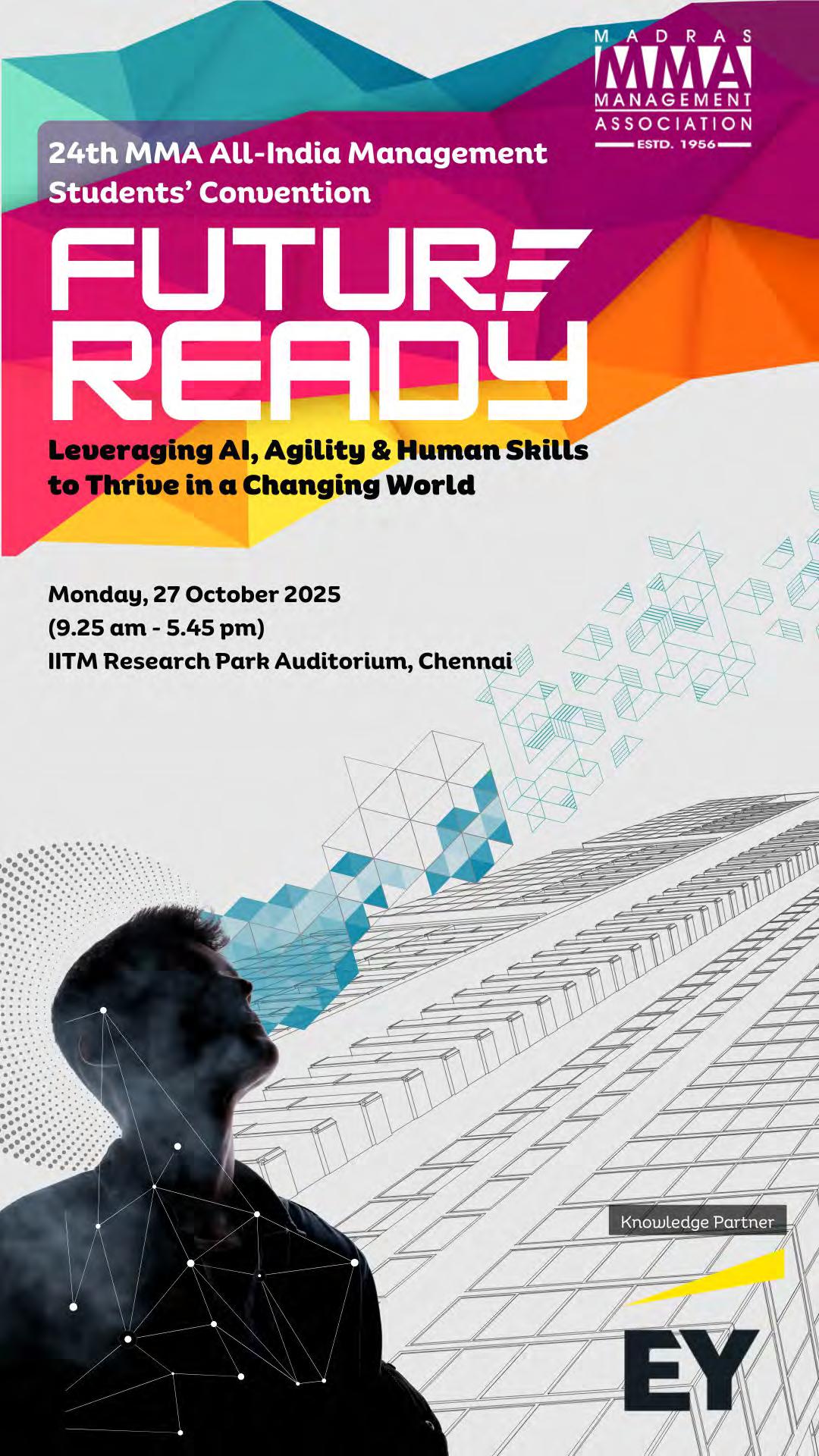

In this MMA‐KAS‐Sri Shakti Trust session, Letika Saran ﴾Retd DGP, Tamil Nadu﴿, L Maithili, and Sowmithra Srinivasan of Shakti Trust redefined safe spaces, calling for cultural change and holistic empowerment of women
Letika Saran, former DGP of Tamil Nadu delivered a thought-provoking speech, drawing from her vast experience in law enforcement and community engagement. She challenged conventional definitions and practices around the idea of safety for women, advocating for a deeper societal shift. She began her address by questioning the conventional definition of a "safe space"—typically described as physical or virtual environments where marginalised individuals can express themselves without fear. While she acknowledged this definition, she firmly asserted that true safe spaces must include everyday locations: homes, workplaces, markets, religious places, gyms, hospitals, and public spaces. In her view, safety should not be outsourced to isolated shelters; instead, it should be integrated into all spheres of daily life.
VIOLENCE IN HOMES AND WORKPLACES
She identified two of the most critical arenas where safety is often compromised: the home and the workplace. At home, the invisible crime of domestic
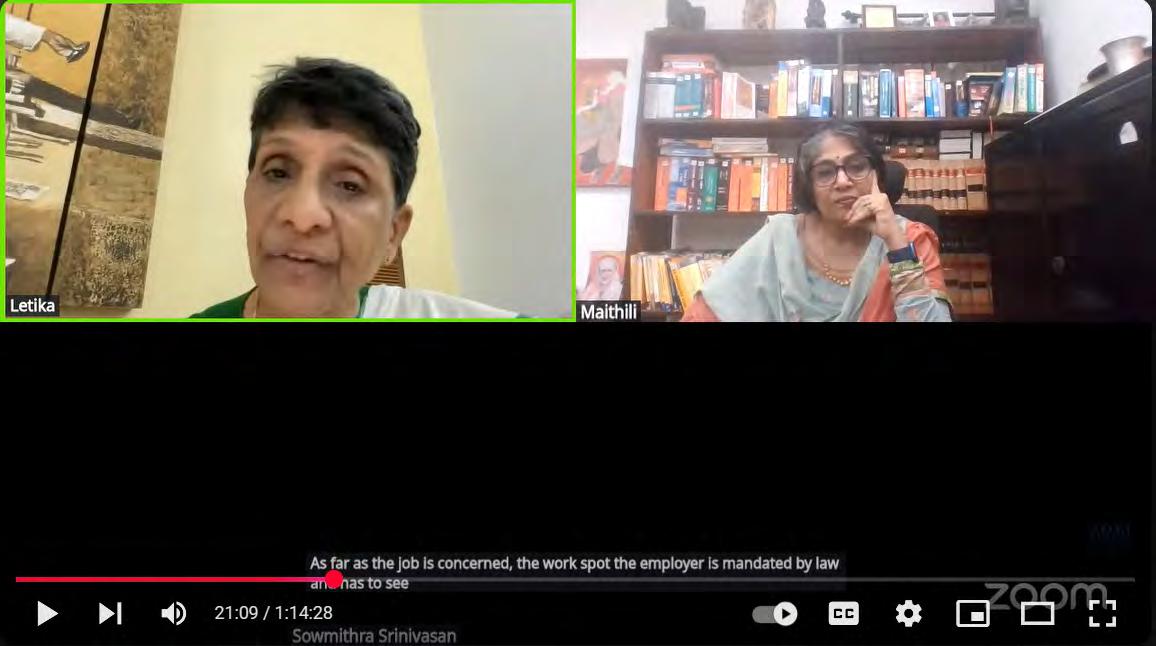
violence—be it physical, mental, verbal, economic, or psychological—often remains undetected unless the victim speaks up. In workplaces, she highlighted the problem of sexual harassment, defined by unwelcome advances, threats, or coercion under the guise of professional interaction.
She emphasised that responsibility for change lies not just with authorities, but with every individual and that society as a whole must act to prevent and address such violence.
A TRAUMATISED YOUNG GIRL
To illustrate the gravity of online harassment, Saran narrated the story of a bright Class 10 student in Tamil Nadu who became a victim of cyberbullying. Her photo and contact number were posted on social media with derogatory remarks, leading to a flood of explicit calls. Though traumatized, she was fortunately supported by her father, the police, and counsellors. The offender—a classmate—claimed it was done "for fun." Saran used this example to underscore how
Empowerment means being part of the decisionmaking process within the family; having shared responsibilities at home...
deeply damaging such incidents can be and the need for timely intervention.
Saran laid out multiple avenues for victims to seek help. Within families, if violence can be resolved respectfully, that is ideal. If not, trusted community elders or extended family may be consulted. Beyond that, professional help from counsellors, internal committees (in workplaces), police, social welfare departments, NGOs, and courts becomes vital. She stressed that quick response by authorities, especially the police, can drastically improve outcomes and empower the victim.
RETHINKING EMPOWERMENT
She raised important questions about what constitutes true empowerment for women. Is it mere financial independence, or does it go beyond? According to her, empowerment means being part of the decision-making process within the family; having shared responsibilities at home; ensuring one’s voice is heard and respected at work and receiving due credit for ideas and efforts.
She argued that a woman is truly empowered only when she has the tools, confidence, and opportunity to take charge of her life and influence her
COMMUNITY EMPOWERMENT INITIATIVES
Saran shared inspiring examples of police-led awareness and outreach programs:
•In the early 1990s, a district SP initiated mobile community units comprising a policewoman, nurse, teacher, revenue officer, and lawyer to educate women on health, law, and livelihood.
•Awareness campaigns using “propaganda vehicles” and Pink Patrols focused on crimes against women and children.
•Operation Garima in Uttar Pradesh, launched in Agra and now expanded across the state, promotes women’s safety through interdepartmental collaboration.
These efforts showed how law enforcement can play a proactive role in empowering women and creating safer communities. The third pillar of her speech focused on community responsibility. A strong community, in her view, is one where all members feel valued, and where collective action ensures safety, justice, and well-being. She cited examples of community policing, where police officers engage villagers to identify and resolve issues—ranging from infrastructure to preventing trafficking—thus reinforcing mutual trust and vigilance.
CHANGING ATTITUDES THROUGH SENSITISATION
Saran concluded with a powerful anecdote from a gender sensitisation program for women police
personnel. When asked whether a husband had the right to beat his wife, all participants initially agreed. However, after training, these same officers were able to counsel men at police stations that such violence was unacceptable. This change in mindset, she noted, not only transformed the officers but also helped influence broader family and societal attitudes, especially among young boys, thereby promoting longterm cultural change.
BEYOND PHYSICAL SAFETY
L Maithili spoke on the need for holistic safe spaces for women—spaces that are not just physically secure but emotionally and psychologically supportive as well. She added critical insights from her legal and social experience.
While acknowledging the efforts of law enforcement in ensuring physical safety, she emphasised that true safe spaces must also be mental and emotional—environments where women can live without fear, express freely, and pursue their aspirations without judgment or inhibition.
She highlighted that violence against women manifests in various forms—not just physical abuse but also emotional, psychological, and economic oppression. These subtle forms often go unnoticed but are equally damaging, particularly in domestic and workplace settings.
THE MYTH OF EMPOWERMENT
The speaker challenged the common assumption
that financial independence alone equals empowerment. Many women, she argued, earn money but remain trapped in toxic power dynamics that limit their autonomy and reinforce dependency. Empowerment, she noted, is about choice, voice, and control over one’s life, not just income.
CULTURAL CONDITIONING AND PATRIARCHY
Mythili attributed patriarchy as the root cause of gender-based violence. She explained how patriarchal systems normalise male dominance, justify abuse, and silence victims through societal attitudes, victimblaming, and legal inertia. She also underscored the need to change cultural narratives that reinforce gender stereotypes.
DIGITAL CRIMES AND PSYCHOLOGICAL TRAUMA
The speaker warned of the growing menace of cybercrimes against women, including cyberstalking, deepfakes, and revenge porn, which have intensified due to technological advancement. She shared an incident involving a rape survivor who displayed extreme post-traumatic stress even in seemingly safe spaces, underlining the deep psychological impact of such crimes.
While acknowledging existing laws like POSH and domestic violence legislation, she argued that laws alone cannot ensure safety. A cultural transformation is required—one that dismantles patriarchal norms, challenges ingrained biases, and builds empathy across communities. She stressed that everyone has a role in shaping this culture, not just institutions.
“Empowering women is not merely about giving them a seat at the table; it is about recognizing that they have always had something to say." L Maithili
EMPOWERING WOMEN AS A COLLECTIVE FORCE
“Empowering women is not merely about giving them a seat at the table; it is about recognizing that they have always had something to say. It means amplifying their voices, investing in their ideas, trusting their leadership, and encouraging them to speak up without fear of ridicule,” Mythili said.
She concluded with a powerful vision: when women are truly empowered, they uplift not only themselves but their communities. She emphasised the multiplier effect of women’s success and advocated for greater inclusion, mentorship, and leadership opportunities.
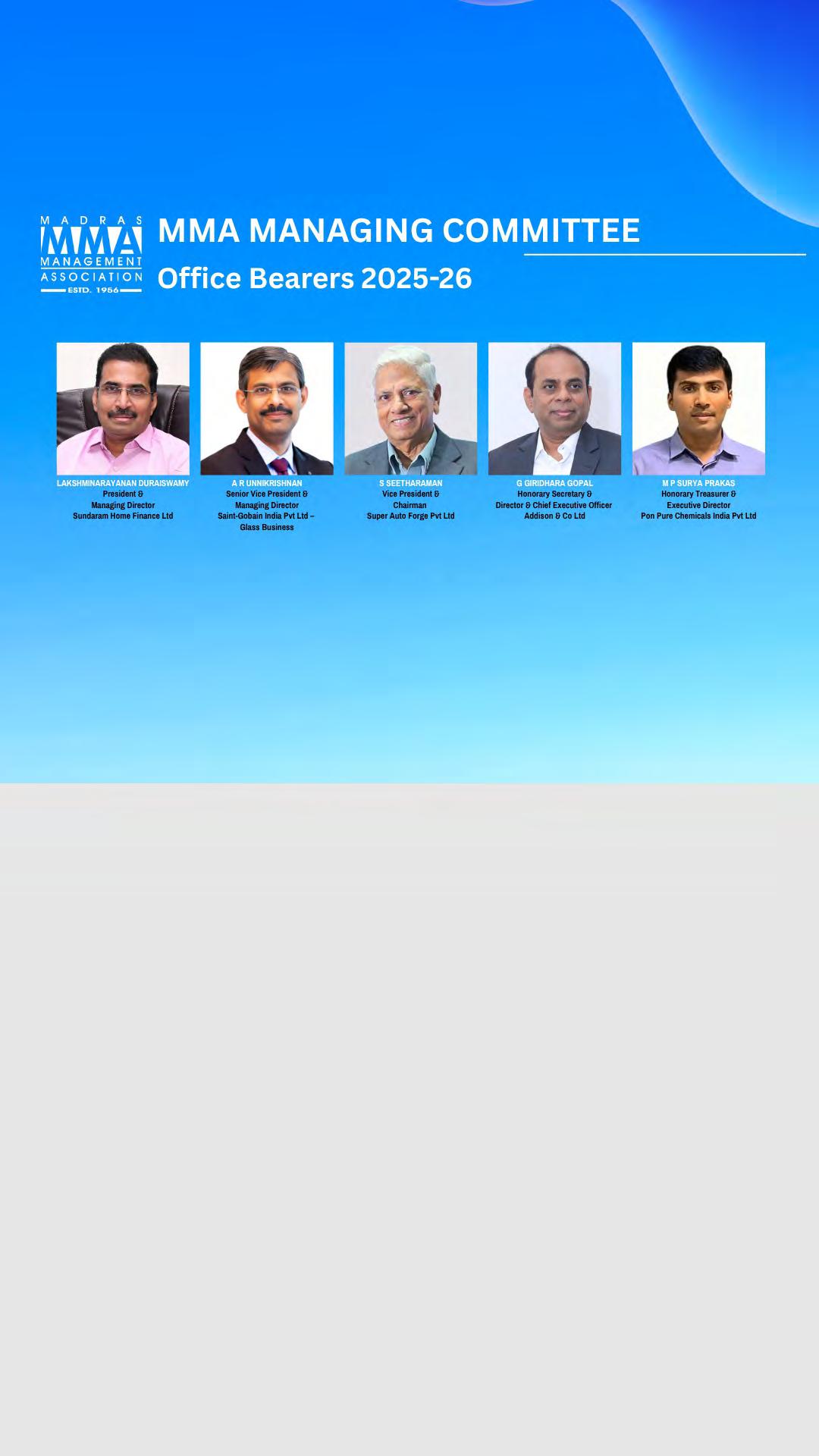
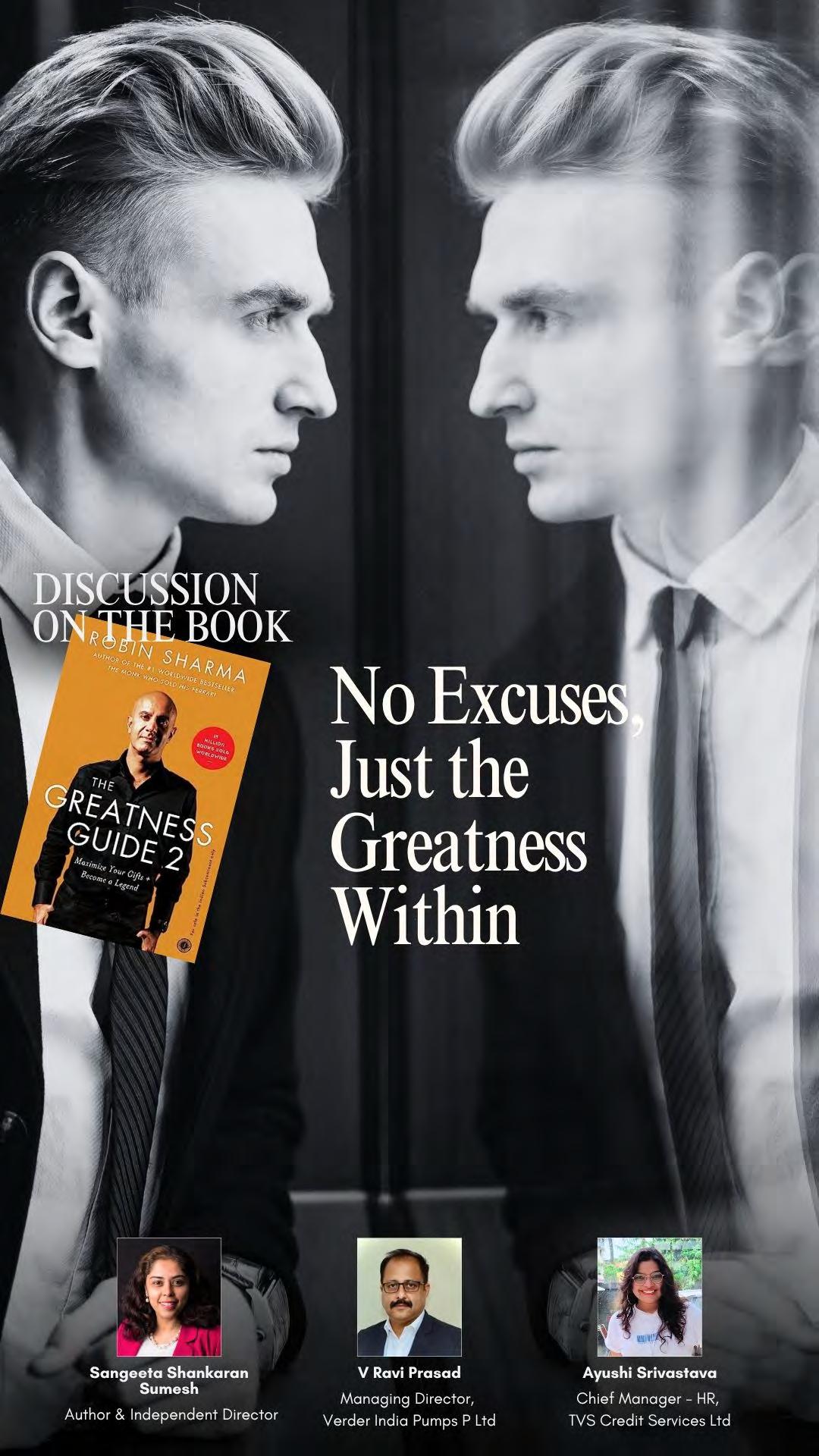
As part of MMA’s “Read & Grow” series, speakers shared leadership insights from The Greatness Guide 2, blending Robin Sharma’s wisdom with personal stories on courage, gratitude, and growth
Sangeeta Shankaran Sumesh: I'm going to share the top 25 points that truly stood out for me— especially from a leadership perspective. These insights can help you become a better leader. Some of them are powerful statements made by the author Robin Sharma, and I’ve spiced them up with real-life examples from my own experience.
Let’s start with the first one: Did you know there will never be a better version of you than you? Robin Sharma says there’s no better time than today to be your best self. The second point is that leadership is not a role—it’s a way of being. Sharma urges us to hold ourselves to world-class standards, take personal responsibility, build meaningful relationships, and elevate others. That’s true leadership.
The third insight is something I completely relate to: Every person you meet knows at least one thing more than you. So don’t leave without learning it. Just last week, I met a client visiting Chennai who runs a speaker bureau. It was supposed to be a casual coffee
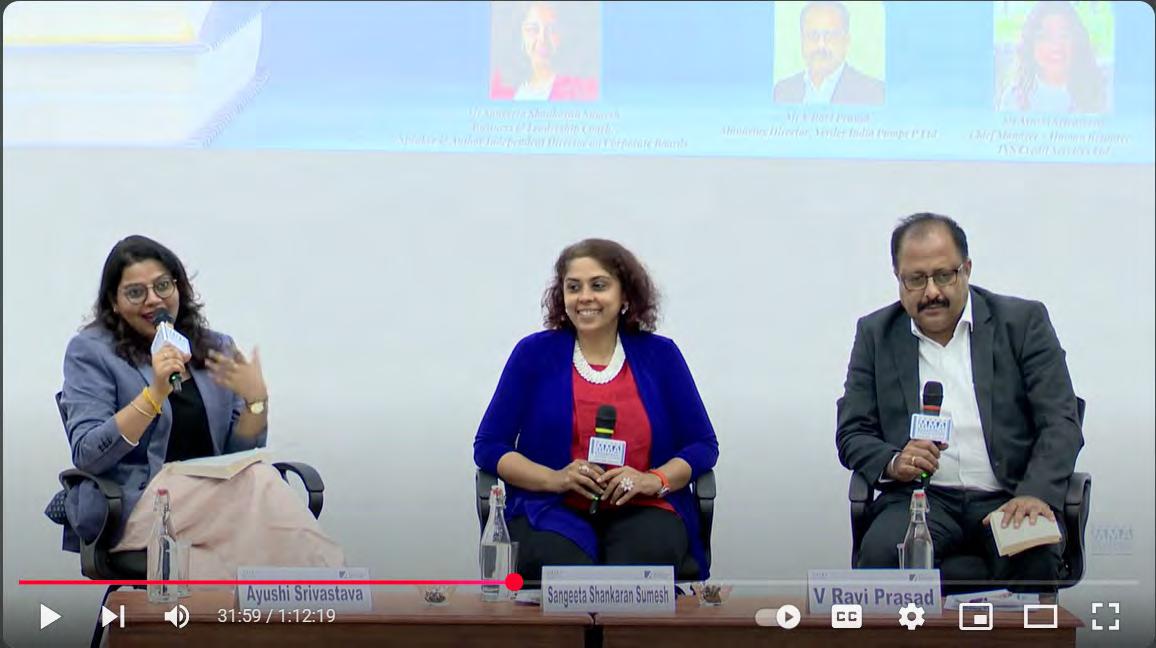
chat, but he ended up giving me some fantastic ideas on how to facilitate my leadership workshops. That’s why I believe—every interaction is an opportunity to learn.
The fourth idea is that tomorrow is incredible— but not everyone gets one. That hit me hard because just last month, I unexpectedly lost a close friend—a CA classmate. It was shocking and deeply saddening. It reminded me that every new day we get is a blessing. So make your tomorrow count.
The fifth point is about your thoughts. What you think about and focus on is what you grow. So instead of complaining, start counting your blessings. Channel your energy towards growth, and see how beautifully life can unfold.
SPEAK UP
The sixth principle is that leadership reveals itself in moments of challenge. I once coached a head of finance in a large corporation—a brilliant, technically sound professional. The company was considering a
major investment that most people supported, but he had his reservations. However, he lacked the courage to speak up. We addressed this in our coaching conversations. In the next board meeting, he calmly but firmly expressed that while the investment looked attractive, the risks were too high. Months later, that segment of the market crashed. His refusal to approve the deal saved the company millions. Today, he’s been promoted as CFO. That’s the kind of leadership that shines under pressure.
The seventh insight is about the power of questions. I once coached a leader who was incredibly rigid—stuck in his ways. But one question changed everything for him: “What would you like people to say about you after you leave this organisation?” That
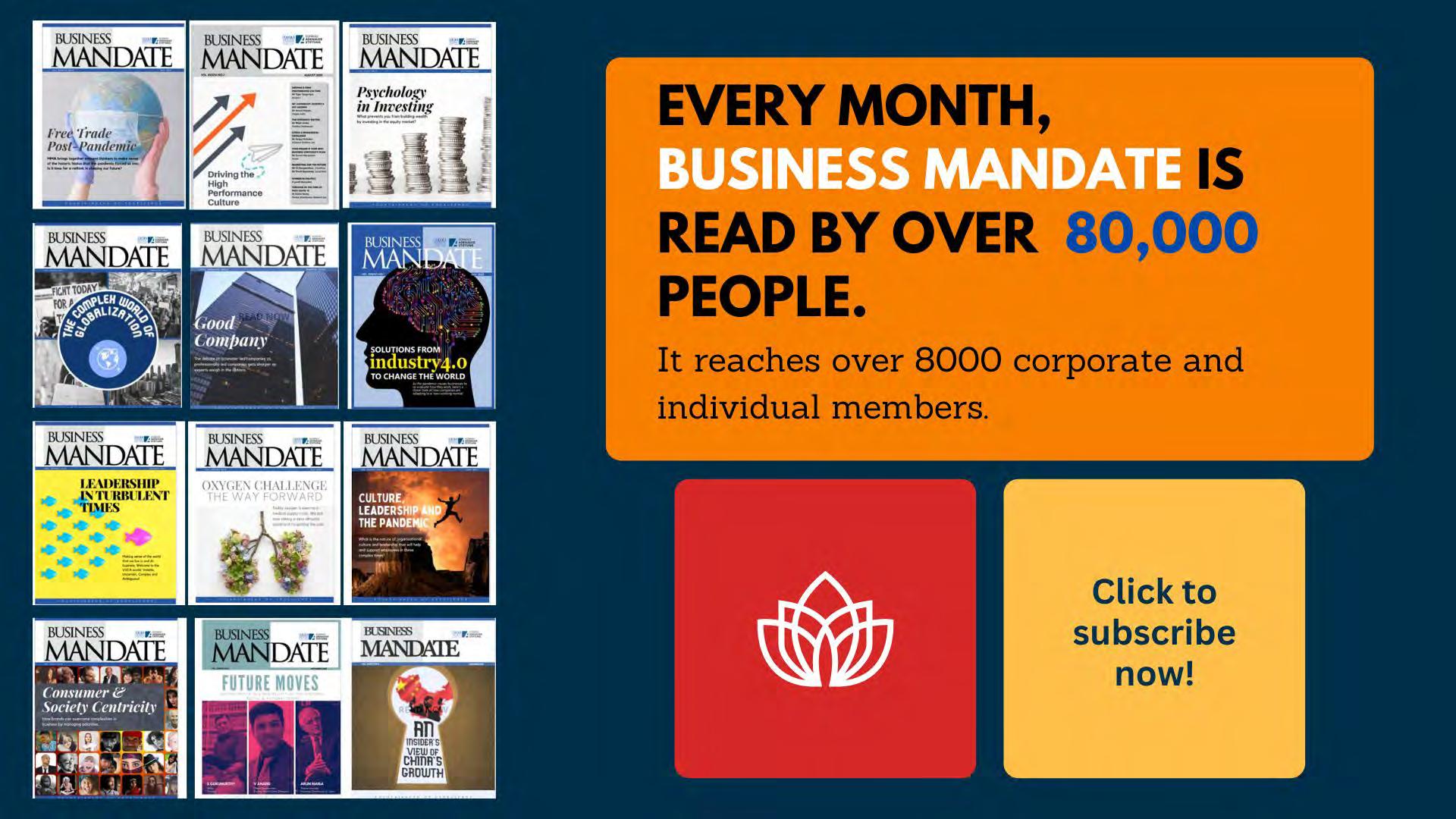
led to a deep realisation that he needed to change his behaviour—to be kinder and more empathetic.
The eighth point asks: What would it take for you to become a “cool brag”—someone others admire and say “wow” about? I talk about the 3W formula: Woo your customers with irresistible offers. Wow them with exceptional experience. Win them over for the long term so you don’t have to keep chasing new clients.
PRACTISE GREAT HABITS
The ninth point—simple but profound—you become what you think about. So pause and ask yourself: What’s occupying your mind today? The tenth asks: What separates the best from the rest? The answer—habits. What are the habits you’re cultivating every day? And do you have the discipline to stick with them?
The eleventh point is about choices—starting with the words we use. Leaders choose their words thoughtfully. Can you deliver even unpleasant messages with tact and kindness? Can you provide feedback in a way that builds, not breaks?
The twelfth point offers a daily prompt: What’s one thing I could do today that would take both my personal and professional life to the next level of greatness? Think about it.
The thirteenth is about your circle. Invite into your personal and professional life those who uplift and inspire you. Who are you surrounded by? Are they helping you grow?
The fourteenth highlights that the quality of your life is directly linked to the quality of your relationships. Sharma outlines some first principles for nurturing them: Be the first to say hello. Smile often. Use people’s names—they love hearing them. Make eye contact. Become a world-class listener. Offer sincere compliments. And treat everyone with royal courtesy. Appreciation makes everyone feel seen—and it’s contagious.
The fifteenth point says leadership is about believing in yourself—and in others—even when no one else does. That’s the foundation of trust and empowerment.
The sixteenth tells us that the best practice is simple: practice. You can’t improve without it. Practice your art, your craft, your leadership—every single day.
SAY NO TO EXCUSES
The seventeenth hits home: No great life was built on a foundation of excuses. I once coached a managing director who had a direct report constantly making excuses—even for simple tasks. It got to the point where the MD couldn’t take it anymore. Eventually, the person was let go. Excuses don’t take us forward. Accountability does.
The eighteenth point reinforces that leadership is rooted in relationships—connect with the people you work with, live with, and even strangers you meet. Leadership is as much about connection as it is about direction.
The nineteenth emphasises that we always have a
choice. We can choose between right and wrong, kindness and harshness, truth and convenience. Let your values lead your decisions.
The twentieth point reminds us that great leaders communicate their vision, coach their people, and empower their teams. When your team feels empowered, they take ownership—and results follow. So, how are you empowering your people?
LISTENING IS NOT OBEYING
The twenty-first is a favourite of mine—listening shows respect. I once spoke to a corporate leadership team about the importance of listening. Afterward, the MD told his team, “That’s why I keep telling you all to listen to me!” It made me smile—but it also highlighted a misunderstanding. Listening isn’t about obedience. It’s about truly paying attention. It’s about creating space for others to express themselves, and for you to understand what’s being said. Here’s how to become a better listener: Pay attention. Ask openended questions. Clarify meaning. Be non-judgmental. Reflect the speaker’s emotions. And finally, paraphrase and summarise. These six steps go a long way in building trust and rapport.
The twenty-second point is a gem. Sharma says the real competition isn’t for a share of wallet—it’s for Listening isn’t about obedience. It’s about truly paying attention.
These are not just principles—they are practices. They are reflections of the leader you already are—and the one you’re capable of becoming.
a share of the customer’s heart. Win that, and the wallet will follow. The twenty-third is that what separates leaders from followers is the courage to speak openly, honestly, and fearlessly. Leadership demands authenticity.
LEADERSHIP BEGINS AT HOME
The twenty-fourth is deeply personal. The fruit never falls far from the tree. Your children will become more like you than you may imagine. Remember, leadership begins at home. What are you teaching your children—through your words, your actions, your priorities?
And finally, the twenty-fifth: What body of work will you leave behind so that generations to come know you were here? This is about legacy. Greatness is not just about success; it’s about creating something that is bigger than you and that outlasts you.
These are not just principles—they are practices. They are reflections of the leader you already are—and the one you’re capable of becoming.
Ayushi Srivastava: The author's suggestion to stop and pause—to truly live every moment, breathe in the spring air, and notice people at grocery stores and coffee shops, simply looking for inspiration
everywhere—was truly remarkable. It made me pause and reflect: Am I really living my life to the fullest? Am I paying attention to the world around me? Because the truth is, inspiration is all around us, waiting to be noticed.
Ravi Prasad: I really liked what the author says about listening—it’s so important. Many times, we don’t even truly hear what others are saying. But genuine listening sparks interest in others; it makes them feel valued. Another point that resonated with me was the idea of having a lust for growth. I did my XLRI program at the age of 52 because I knew I needed to keep growing. If you’re not learning, you’re becoming outdated.
Ayushi Srivastava: There was a line that really stayed with me—“Greatness comes from mastery around fundamentals.” It took me back to my childhood. I always felt the need to be better than my elder brother or the people around me, largely because of the constant comparisons my parents made. Like most parents, they just wanted each child to succeed and excel. But that perspective, unfortunately, never really changed as I moved through my studies and later into my career.
Over time, it started taking a toll—both mentally and physically. I found myself disillusioned, questioning what I was actually working for. There was so much pressure, a lot of darkness, and at one point, I felt like I had lost the zest for life altogether.
Thankfully, along the way, I met some truly kind and grounded people who helped me see things differently. They reminded me that life is about the
simple things—our habits and our thoughts. Habits that feed the mind and body, thoughts rooted in progression and gratitude. We must learn to listen— not just to others, but also to ourselves. Listen to your body. Listen to your mind. Listen to your inner voice. That’s where clarity begins.
The book also emphasises that everyone can be a leader. That’s what we call an entrepreneurial mindset. Excellence isn’t about grand achievements—it’s about mastering the small, basic things. It’s about showing up every day and doing your thing with consistency.
Sangeeta Shankaran Sumesh: The author talks about taking charge quickly. In your career, have you experienced this?
Ravi Prasad: Back in my school days, I was a fast bowler. I’ve always thought of direction as the wallet and speed as the currency—because without currency, the wallet is empty. That analogy has stayed with me. When I joined my current company six months ago, I didn’t wait for someone to give me instructions. I took initiative, identified the gaps, did a quick gap analysis, and immediately started working to bridge those gaps.
Last week, while I was in Europe, my CEO told me, “Just calm down.” We’re a European-based company. For me, coming from a sales background, speed is second nature. I believe in the acronym NOW, which for me stands for Number Only Works.
THE POWER OF GRATITUDE
Sangeeta Shankaran Sumesh: The book talks about the importance of gratitude, and I like to call it GGG—
Get Great at Gratitude. And what has been the impact of practicing gratitude?
Ayushi Srivastava: Life throws a lot of curveballs at us, and we have to play with the cards we’re given. Practicing gratitude isn’t always easy—it’s actually quite difficult when you're going through tough times. But I believe acceptance is the thread that ties gratitude together. Once you begin to accept your life and the challenges that come your way, you start to see more choices open up. You begin to take accountability and responsibility for your path.
Acceptance has really helped me clear the mental fog and move forward—towards excellence, towards becoming the best version of myself. It’s so important to pause and reflect, especially when something is bothering you. This is something that has personally worked for me: if something hurts, allow yourself to feel it—cry if you need to—but don’t stay in that moment. Let it out, then let it go. Life will continue to be challenging, no doubt. But gratitude, when practised with acceptance, has been a powerful anchor for me.
Sangeeta Shankaran Sumesh: A line that in the book says, 'The only way to truly get power is to give it away.'
Ravi Prasad: We need to empower people—that’s the essence of leadership. In every review meeting I conduct, I make sure to include R&R: Rewards and Recognition. People need to feel valued, and appreciated. As a leader, what truly matters is not what people say in your presence, but what they say about you when you’re not in the room. Jack Welch
once said: “When you become a leader, your role is not to create more followers, but to create more leaders.”
Sangeeta Shankaran Sumesh: Many leaders hesitate to give away authority and power. It’s something that sounds easy in theory, but in reality, putting it into practice is quite tough. How can one effectively practice this?
Ravi Prasad: Yes, I meet several customers, and whenever we present a proposal, we always include something called TNC—Terms and Conditions. But I like to take that a step further. I tell every customer, initially it’s TNC as in Terms and Conditions. But the moment the order is confirmed, TNC takes on a new meaning—Trust and Commitment. When you have confidence in your people, when you trust your team members and stay committed to them, that’s when real results happen.
MAKING EXCUSES
Ayushi Srivastava: Let me share my thoughts on making excuses. During my time at XIM Bhubaneswar, where I pursued my MBA, there were several campus placement drives happening. I couldn’t even get through the group discussion round initially. I was anxious, scared, and filled with self-doubt. But then I had a moment of clarity—I told myself, I have nothing to lose. Enough of the excuses.
What followed truly surprised me. I not only cleared the group discussion round, but also did exceptionally well in the interviews. That’s when my corporate journey really began.
Since then, I’ve faced many challenges—my first board meeting, my first interaction with general managers, switching jobs, relocating to a new city, adjusting to a new family environment, and so on. Each time, I found myself standing at the crossroads of fear and courage. And the fundamental lesson I’ve learned through all these experiences is this: if you can move past your excuses, that’s where greatness truly begins.
Sangeeta Shankaran Sumesh: What are your leadership lessons from your home?
Ravi Prasad: I strongly believe that leadership starts at home. I try to nurture my children by exposing them to inspirational old Tamil film songs that carry powerful messages. One of the lessons from a song is that making a mistake is okay, but wilfully repeating it is not. These songs often convey timeless values, and I believe they shape character from a young age.
Second—in professional life, I believe it’s important to stand out. Be different from the crowd. Sometimes, going in the opposite direction is what leads to breakthroughs. When I first started selling products, I faced rejection from every angle. Nothing seemed to work. Then I changed my approach—I went perpendicular. Instead of selling just a product, I began offering a complete system. That shift in mindset helped me unlock significant business opportunities. It’s about seeing things differently— and acting on it.
Ayushi Srivastava: The best example I can cite from my own life is my husband. He’s the Chief Manager at
a consumer durables company, and I’ve always admired how focused, diligent, and committed he is to his work. I’ve learned a lot from observing him, especially the simple but powerful idea of doing your karma—putting in your efforts without being obsessed over the outcomes.
Success is merely a consequence of consistent, sincere effort. Work as if it’s your religion. Keep things simple, stay grounded, and focus on the fundamentals. That mindset, I’ve realised, can make a real difference—not just in personal growth, but also in organisational performance and business outcomes. That has been one of my most valuable learnings.
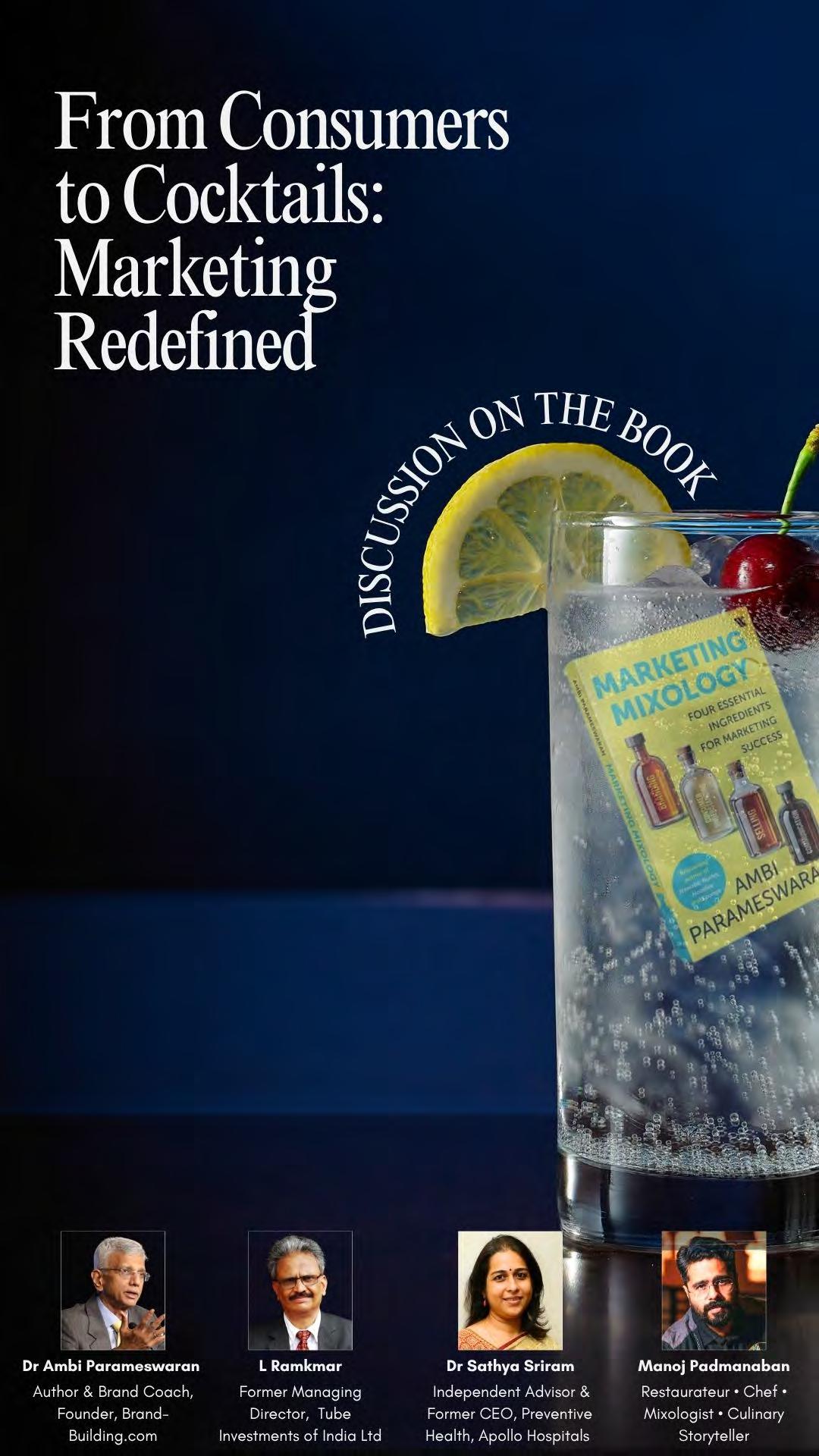
At MMA’s session on Marketing Mixology, five experts explored brand strategy, negotiation, culinary storytelling, and consumer insight— stirring up fresh perspectives on marketing in an age of disruption and personalisation
Dr Ambi Parameswaran: The ideal marketing mix, in my view, includes understanding the consumers, brand building, selling & negotiation and communication. Let me begin with an interesting story about negotiation.
You may have heard of Theodore Roosevelt, a former President of the United States. During his campaign for the presidency, his campaign manager found a good photograph of him and had a million leaflets printed using that image.
Then someone asked the campaign manager, “Did you take permission from the photographer to use this photograph?”
He said ‘no’. Reprinting the leaflets would cost around two million dollars, and if they asked the photographer now, he might demand a licensing fee of one million dollars. But this campaign manager was not an ordinary person—he was a smart political strategist. He knew he had to find a way out because he didn't have that kind of money. He sent a telegram to the photographer. It said: “Here is a great
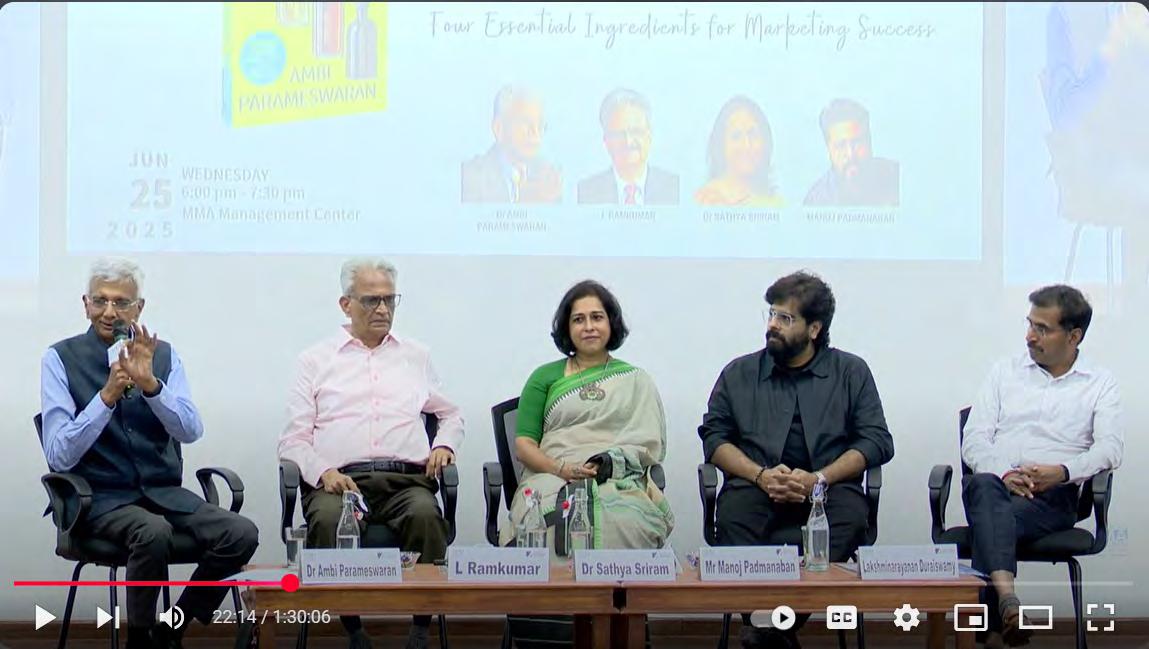
opportunity to publicise your work. We would like to use the photograph you took of Theodore Roosevelt in our campaign leaflet. How much will you pay us for this opportunity?”
The photographer replied: “Thank you very much. I can only afford to pay $250.” The campaign manager agreed. He took $250 from the photographer, instead of paying him a million dollars! This is a classic example of information asymmetry in negotiation. The campaign manager knew the leaflets were already printed. The photographer didn’t know. The manager used that gap in information to his advantage—and ended up making money instead of losing it.
We often write complicated sentences when simple ones would do. Once, I was conducting a workshop for PepsiCo, and Shiv Shivakumar, who was the CEO at the time, introduced us to a very useful tool: the Gunning-Fog Index. It’s available online and free to use. Just copy-paste any paragraph, article, or chapter into it, and it will tell you the number of years of schooling someone needs to clearly understand
that piece of writing.
The ideal score is around 7, 8, or 9—which means your writing is easy to understand. If the score goes up to 12 or 13, it’s in the danger zone. That means it may be too complex for many readers. So the lesson is this: Keep your communication simple.
THE SPIRIT OF MIXOLOGY
Manoj Padmanaban: My day job—or rather, the most interesting thing I do—is marketing. I've been selling products for years, but today, the medium has shifted for me. Now, it's Instagram. I'm an engineer by qualification, but I started cooking at a very early age mostly out of necessity. I love to eat! My mother insisted I learn to cook before I went off to college, and that’s how it all began.
I come from a place called Mayavaram, down south. I was once selling software services in the US, but eventually, I returned to India and took over my family business. That business was a traditional chit fund company called Mayavaram Finance Corporation Limited—an organisation with a legacy of 75 years. I tried to fit in and contribute over the course of a decade, but I never really had the chance to sell a service there. I always felt a little out of place.
Eventually, I sold the company. After exiting, I turned my focus to something that had always intrigued me: food and beverages. I started my first restaurant in Chennai, called Pandan Club. That marked the beginning of my full-time journey in the F&B industry. Today, I run several restaurants. My day job now is selling food—through various channels and
platforms—and that’s what I love doing. Mixology is one part of what I do. I really enjoy mixing drinks. That interest developed over time—especially during my travels as a sales professional. I’ve visited more than 50 countries. When I had free evenings abroad, I often found myself at bars, simply watching bartenders mix creative and exciting drinks. That’s how I picked up the craft.
When I returned to India, I noticed a lot was happening in cities like Delhi, Mumbai, Bangalore, and even Goa—things that weren't yet available in Chennai. To me, mixology is all about craft and balance. It’s not just about pouring fruit juices into alcohol and stirring. We even launched a movement called Zero ABV (Alcohol by Volume). I’ve always disliked the term mocktail—there’s nothing to mock! Just call it a drink or juice. So, we began creating base drinks with real craft behind them.
I’m also joined in this journey by people from the industry. Together, we crafted Zero ABV drinks—nonalcoholic scotch, Negronis, and other sophisticated non-alcoholic cocktails. This became a movement of its own. Interestingly, the world is moving in this direction. Many Gen Z consumers are choosing not to drink alcohol. That’s what Zero ABV is—drinks without alcohol, yet full of experience. And I’m proud to say we even won India’s top award in the Zero ABV category. When we brought this movement to Chennai, it drew a lot of attention to the city. As someone who tells stories, I used that movement to spotlight Chennai’s evolving food and beverage culture.
Ambi Parameswaran: Just to add some context- the fastest-growing segment in the U.S. beer market today
Bartending typically involves pouring straight drinks, adding soda or tonic—following standard procedures. But mixology is different.
is non-alcoholic beer. Ambi: Guys who mix drinks were always called bartenders. When did they start being called mixologists?
Manoj Padmanaban: Mixology is like being a liquid chef. Bartending typically involves pouring straight drinks, adding soda or tonic—following standard procedures. But mixology is different. It’s about craft, technique, and finding the perfect balance to create a truly delicious drink. Think of it like Indian cooking. Unlike Western cooking, where you might assemble a few ingredients, Indian cooking is more homogeneous you blend everything together.
Take a curry, sambar, or chicken gravy—you can’t really tell all the individual ingredients just by tasting it. It’s a rich amalgamation of flavours. That’s exactly what mixology feels like to me. There’s a lot of preparation involved. It’s not just mixing; it’s a thoughtful process. The ingredients may come to your table separately, but they’re brought together with precision and creativity—resulting in a well-balanced, crafted drink.
Today, for customers, a drink has to be more than just a beverage. It has to be visually appealing. It needs to come with a story. There has to be some drama—though even the old-school smoking effect is now fading away. There’s a new movement in the bar
scene focused on ice. If you look at new-age cocktails, you’ll notice you often can’t even see the ice—it’s practically invisible. That’s because of something called clear ice. And there’s real craftsmanship behind it. In Chennai, we’re among the very few bars that use it—it’s sourced from Delhi. It takes specialised machinery and a lot of effort to produce. But the result is stunning.
Another trend we’re seeing is the rise of spiritforward drinks. Gone are the days when a cocktail tasted like watermelon juice or just fruit. Now, people want to taste the spirit—be it gin, rum, or whisky. That’s where the appreciation lies.
Ambi Parameswaran: So, when people come to your bar, what’s the most popular drink?
Manoj Padmanabhan: Let me explain it from a marketing perspective. Just like in any good campaign, you need to understand your consumer first. Take my restaurant, Pandan Club, for example. I get a wide variety of guests—different age groups, tastes, and preferences. So I segment them like I would in a marketing campaign. I created a drink without ice. It’s served in a champagne flute, looks elegant, feels celebratory—you can say cheers and still look cool. That’s how I design drinks: based on the audience.
Ambi Parameswaran: Tell us about Movie Night.
Manoj Padmanabhan: Movie Night is one of our most sold drinks. Chennai loves its movies. When you go to Satyam Theatre or PVR, whether the movie is good or bad, you order popcorn and eat it. What’s the first drink most people try in college? For many, it’s Old Monk. So I fused two ideas: Old Monk and
Ambi Parameswaran
popcorn. It’s called an Old Monk Negroni with a popcorn infusion. We call it Movie Night. The concept came from my restaurant in T. Nagar. Kodambakkam, the heart of Chennai’s film industry, is nearby. I stole the story from there.
The drink is a hit with Gen Z. It connects the past (Old Monk, a drink their dads probably enjoyed) with something playful and current. It's a perfect blend of flavour and storytelling. And that’s what today’s cocktail culture is really about.
THE FUTURE OF AD AGENCIES
Ramkumar: You must have heard of Mark Read stepping down from WPP. They say he resigned because he couldn’t manage the digital transformation of the agency. WPP, as we know, is one of the largest advertising conglomerates in the world. So where is this all heading? What’s the future of ad agencies? Are we going to see a big transformation or churn? What’s happening overseas and how does it compare to what’s happening in India?
Ambi Parameswaran: Honestly, your guess is as good as mine. Right now, the big agencies are going through a phase of intense disruption. Some might call it chaos. Take my old agency, FCB. It was part of Right now, the big agencies are going through a phase of intense disruption. Some might call it chaos.
Interpublic Group (IPG), but now it’s been acquired by Omnicom. That means FCB, McCann, Lowe, and other IPG brands are likely to be bundled together with Omnicom agencies like DDB, BBDO, and TBWA. What’s going to emerge from this “masala mix” is anyone’s guess.
The big agencies are under pressure from two completely different directions.
On one end, their business is being threatened by consulting giants like Accenture and McKinsey. Both have built sizable advertising and brand consulting arms. And when a CEO talks to another CEO, and hears, “Your advertising isn’t delivering—we’ll fix it for you,” that message carries weight. These consultancies are entering the marketing space from the top of the value chain.
On the other end, you have nimble independent agencies that are eating into the big players’ business from the bottom. Let me give you an example. Harshal Karkera runs an agency called Schbang. It’s just five years old, but already employs around 2,000 people. They’ve built offices in Mumbai, Delhi, Bengaluru, London, and even Amsterdam. That kind of scale in just five years! It probably took legacy agencies like FCB 25 years to reach that level of global presence.
So, what’s happening now is this: clients are exploring both ends. They’re choosing either the strategy-driven, tech-powered consulting firms at the top; or the young, agile, content-savvy independents at the bottom. And the traditional agencies are caught in between and struggling to find their footing. But the
cycle might turn. Interestingly, big clients today are saying, “We don’t want multiple agencies. Can one agency handle everything—advertising, PR, digital, website, analytics?”
We’re seeing a move toward integrated communications. But where this is heading, no one really knows. And then there’s the big wildcard—AI.
When I started my career, I diligently took meeting minutes for two years. Today, that job is obsolete. Just leave your phone on during the meeting, and an AI tool will transcribe it for you. Recently, we had a client meeting, and five minutes later, I got wellwritten minutes, thanks to AI. But here’s the issue:
If young account executives never learn how to write minutes, how will they critique or improve what AI generates tomorrow? It's a slippery slope.
Ramkumar: How did Accenture and McKinsey break into this space? What did they bring that ad agencies didn’t?
Ambi Parameswaran: Back at FCB, we used to say, “We’re not an ad agency; we’re marketing consultants.” In the old days, agencies had direct access to CEOs—people like Premji or Ravikant. Today, that relationship has slipped down to CMOs and brand managers. Meanwhile, consultancies like McKinsey, BCG, Accenture, and Bain have built deep relationships at the CEO level. So now, if your ads aren’t working, they step in and say, “We’ll analyse your campaigns and fix it.” And clients listen.
Ramkumar: With digital now dominating, how are media plans evolving? How do clients decide budget allocation?
The idea was: we have access to so many people. How do we help brands across the country understand the South Indian consumer better?
Dr Sathya Sriram
Ambi Parameswaran: There’s no single formula. In my early days, media meant print, cinema, a bit of radio—and then came Doordarshan, followed by satellite TV. Now, every media plan starts with YouTube and Meta. There are metrics galore— impressions, views, cost-per-click, customer acquisition cost (CAC). Clients are often confused. One thinks YouTube counts a view at 30 seconds, another says 5 seconds. So what does ‘one view’ really mean? Impressions mean nothing on their own. A lot of clients just spend big and hope something clicks.
THE RISE OF SKINTELLECTUALS
Ramkumar: With all this churn, what’s the future of brand longevity?
Ambi Parameswaran: Brands have been declared dead many times. In the UK during the '60s and '70s, supermarkets launched private labels to kill brands. But brands were not dead. Then came Naomi Klein’s No Logo, predicting the death of branding. That didn’t happen either. In fact, The Economist later ran a cover: “Pro Logo”. In times of chaos, people gravitate toward familiar, trusted brands. But yes, competition is increasing. Market share will get chipped away.
India’s consumer pyramid is shifting. It was once bottom-heavy, serving mass markets. Now, we see multiple premium segments emerging. Consumers are more aware. My students coined the term “skintellectuals”—they know their ingredients. They’ll seek creams with 5% ceramide or 7% retinol, and pay Rs.1,000 for it. Look at the skincare brand Minimalist —just four years old, Rs.250 crore top line, Rs.20 crore profit. Unilever paid Rs.3,000 crore for it! Why? Because it caught the wave of intelligent consumers willing to pay for value. Even in the car market, the trend is upward. Alto is no longer a bestseller. Consumers want SUVs like the Hyundai Creta or Tata Punch. Aspirations are changing.
Understanding the consumer is the most important part of marketing. Peter Drucker said, “The only purpose of a business is to create and keep a customer.” Yet, many marketers don’t spend enough time meeting customers.
Good companies insist that marketers spend five days a month visiting homes, shops, and markets because that’s where insights are born. Once you understand the gaps, then you shape your brand, your communication and your sales pitch.
THE POWER OF PERSONALISATION
Now here is a question to Dr Satya: In your work with Apollo ProHealth, how did consumer understanding drive preventive care, innovation, and personalisation?
Dr Sathya Sriram: I completely agree that understanding the consumer is fundamental. In fact, it
demands disproportionate attention. Even at The Hindu Group, one of the exciting initiatives we undertook was setting up a Reader Intelligence Unit. The idea was: we have access to so many people. How do we help brands across the country understand the South Indian consumer better?
Coming back to preventive care—one thing I insisted our teams do (and I did myself) was observational studies. For the first four months on the job, I sat inside one of the doctor’s offices, right in the middle of the patient flow. That gave me a real understanding of how patients move through the system—where they go, what they do, how long they stay, and so on.
Everyone who later joined my team had to do something similar. They were assigned to a centre where they knew no one and had to "mystery shop"— observe, interact, and return with actionable insights. This approach drove a lot of our innovation and personalisation. For instance, we realised that while we kept talking about "preventive health," most people didn’t actually understand what that meant. It felt like a big, abstract term. But if we say “health checkup”, then everyone gets it. So we kept “preventive health” as our internal term but switched to “health checkup” in consumer communication.
The next issue? People would get these long reports—full of red, green, yellow markers and think, “Now what?” For the scientifically inclined—what I like to call the scintellectuals or skintellectuals—we used tech to synthesise and simplify the report. The first page would clearly list which parameters are fine and which need attention. We also recognised that doctors
typically have only about 1.5 minutes with each patient. That’s barely enough time to talk—let alone explain things. And ironically, the moment you step out of the consultation room, that’s when all your questions begin.
So, we built a follow-up program. Within a week, a health coach would call you, with your report in hand, to answer your questions and offer real, personalised guidance. Whether it’s about losing weight or managing cholesterol, they’d walk you through it. All of this became part of a more holistic product. We also noticed that while some customers were pricesensitive, others were flying to the UK or US for checkups! So why not give them a premium experience right here in Chennai, on Apollo Greams Road?
We curated different offerings for different segments. For budget-conscious users, we modularised the product. You could start small. For example, instead of eight liver function tests, we’d recommend starting with just three. On the premium end, we built all-inclusive, luxury packages tailored to every possible need. Much of this innovation stemmed from direct consumer interactions—through conversations, observations, and even watching how they read their reports. We’d hand them a tablet or a printed file and just observe—where they paused, looked confused, skipped, or re-read. All of that input shaped our product innovations in meaningful ways.
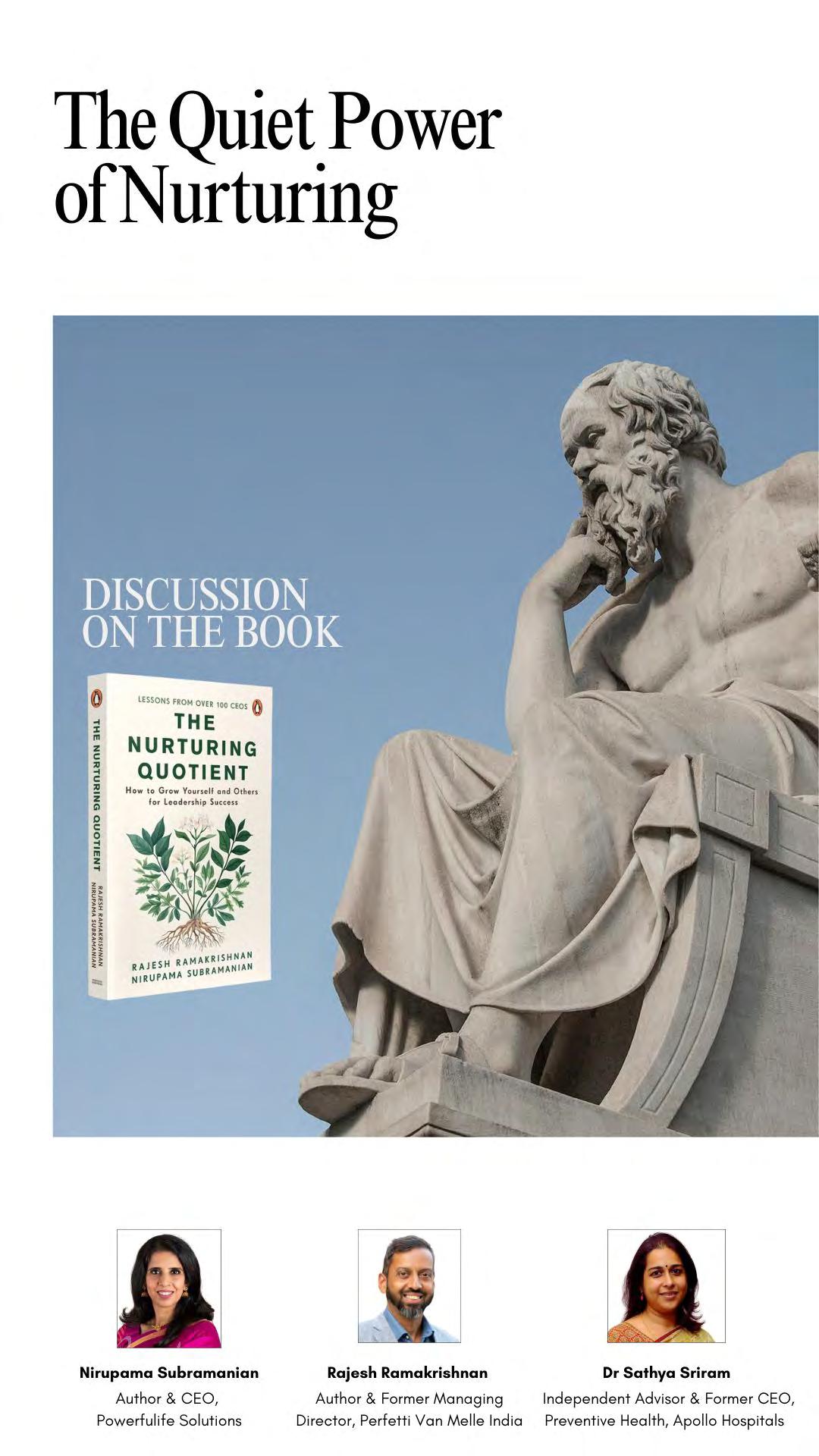
At an MMA session on 19 July 2025, authors Nirupama Subramanian and Rajesh Ramakrishnan joined Dr. Sathya Sriram to discuss The Nurturing Quotient and its relevance to modern leadership.
Dr. Sathya Sriram: Nirupama and Rajesh, you’re not just co-authors of this book. You’re also partners in life. What inspired you to write TheNurturingQuotient?
Nirupama Subramanian: I’ve been a leadership coach, facilitator, and author for many years. Through my coaching sessions and interactions with leaders— especially in the post-COVID world—I started noticing a pattern. People kept bringing up what I call the three S’s: Stress, Struggle, and a Sense of Dissonance.
The first was stress. Many were working 14-hour days and feeling overwhelmed. The second was struggle—leaders were facing daily challenges as old models stopped working. With rapid change and a new generation in the workforce, especially Gen Z and millennials, the expectations from leadership had shifted dramatically.
The third was a deep dissonance between what people truly wanted to do and the pressures they faced in their roles. These recurring themes made us reflect, and that’s how the idea of the Nurturing Quotient was born.
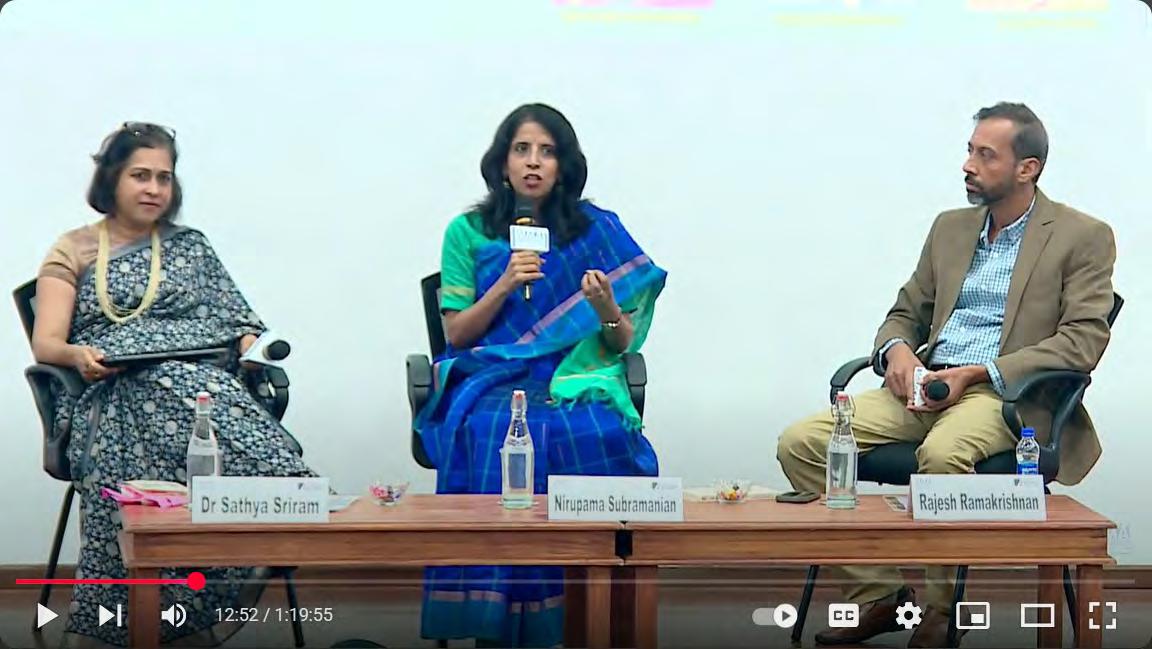
Rajesh Ramakrishnan: When it comes to leadership, there are two aspects. The first is the “what”—mission, vision, strategy, and so on. That part can even be outsourced to consultants like McKinsey or BCG if needed.
But the real differentiator is the “how.” How do you bring your team along, how do you inspire them, and how do you deliver results together? That’s where good leaders are separated from great ones. The old command-and-control style no longer works. What we need today is a far more collaborative approach to leadership.
On a personal level, I’ve pursued passions like photography and yoga, each of which has nurtured me in different ways. So the concept of the Nurturing Quotient was shaped by both external experiences and internal reflections.
Dr. Sathya Sriram: Tell us a little about why a leader should think of themselves as a gardener. What qualities, from a gardener’s perspective, should they embody?
In today’s world of quick wins and quartertoquarter results, patience is rare. — Rajesh Ramakrishnan
Nirupama Subramanian: I’m not really much of a gardener myself. I barely manage to keep a few plants alive! But I truly believe that gardeners perform a valuable act of nurturing. In fact, the word “nurture” is most often used for children and plants, and that idea seemed to hold the secret to the new kind of leadership we’re talking about.
When we looked at the process of gardening, we found it mirrors the process of leadership in many ways. First, you prepare the soil—this means creating the right environment, the right vision and values. That’s something a leader must do too. Second, you plant the seeds, —bringing in the right people, resources, and new ideas.
But planting isn’t enough. The next step is providing water and sunshine. This is where you coach, mentor, nurture, and guide your team. And finally, just like in a garden, you have to pull out the weeds. You have to prune what doesn’t work. That could be bad habits, unproductive behaviours, or even systems that are holding people back.
A good gardener knows when and what to prune. And all this takes a special kind of mindset. That’s why we talk about the four core qualities that leaders and gardeners need.
Rajesh Ramakrishnan: Yes, the four essential
qualities of a nurturing leader are Humility, Openness, Patience, and Empathy.
Humility is the ability to say, “I don’t know,” or “I made a mistake.” There’s a direct link between humility and success. Leaders who are humble tend to do well in the long run. The second is Openness or having the curiosity to explore beyond just your own space. We found that leaders who were open to asking questions and learning were not just better at business, but also better at nurturing people.
The third, which is often undervalued, is Patience. In today’s world of quick wins and quarter-to-quarter results, patience is rare. Of course, it doesn’t mean waiting endlessly—but it does mean treating some actions as investments rather than just costs. And finally, Empathy—the ability to step into someone else’s shoes, without necessarily wearing them. It’s not about taking on everyone’s burdens, but being able to understand, support, and still let people find their own way.
Dr. Sathya Sriram: How much of this nurturing do you believe is an innate trait, and how much of it can actually be learned and improved over time?
Rajesh Ramakrishnan: I think it’s a bit of both. What we found is that there are several factors that influence a person’s ability to nurture. One is values. Individual values shaped by how we grow up, the culture at home, and the environment at work. Upbringing, demographics, and personality traits also play a role in shaping how much and how well someone nurtures themselves and others. There is definitely some innateness to it. If you’re someone
Nurturing is not genderspecific or agespecific. It’s a skill.
— Nirupama Subramanian
who is naturally humble, open, patient, and empathetic, you’re more likely to be a good nurturer.
But we also strongly believe that, like any other skill, nurturing can be developed. That’s where our AISH model comes in. It begins with Awareness— recognising that this is a skill you want to build, such as patience. The next step is Intention, where you consciously decide to develop that ability. Then comes Start Action, which involves taking small, consistent steps toward that goal. Finally, through repetition and commitment, these actions lead to Habit Creation, where the behavior becomes a natural part of who you are. So yes, while some people may have a natural tendency, it is absolutely possible for anyone to nurture this ability.
Nirupama Subramanian: One more layer people often add is: ‘Are women naturally more nurturing?’ We explored that too, and the answer is—not necessarily. It’s a common assumption, but in our research, we found no significant difference. Among the people we interviewed, there was a good mix and both men and women alike demonstrated nurturing qualities.
So, nurturing is not gender-specific or agespecific. It’s a skill. Anyone who genuinely wants to care for others and support their growth can develop the mindset, behaviours, and skills to become a nurturing leader.
Rajesh Ramakrishnan: A lot of the leaders we spoke to were very intentional about nurturing their physical well-being. They made a conscious effort to take care of their health, perhaps influenced by the post-COVID reality. Many of them also prioritised leisure and made sure to get some downtime.
However, when it came to mental and spiritual nurturing, we found the same level of intention was often missing. Mentally, leaders were learning, but mostly to meet the demands of their jobs. They weren’t always nurturing themselves in a deeper, more reflective sense.
As for the spiritual aspect—and I want to clarify, this has nothing to do with religion—we looked at it as connecting to one’s purpose, finding a sense of contribution, setting aside time for reflection, or even following a faith-based practice, whatever that may be. This dimension was often overlooked or not given as much importance.
When it came to nurturing others, we noticed a similar pattern. Leaders had the intention, but they weren’t always intentional in their actions. It often happened on the go—depending on the organisational culture, the industry, and day-to-day pressures. They meant well, but they didn’t always make time deliberately for it.
Dr. Sathya Sriram: Rajesh, anything that surprised you during your conversations with so many CEOs? Something you didn’t expect?
Rajesh Ramakrishnan: One question that always comes up is: ‘Do CEOs really have time to nurture themselves or others?’ Surprisingly, many of them did
make time to nurture themselves—and that was encouraging to see. What stood out was how they did it. They found ways to weave it into their daily routines. For example, one leader said, “I walk around the office premises before lunch to get some movement during the day.” Another mentioned, “I take evening calls while walking.” They figured out small ways to integrate self-care into their schedules.
But here’s the contrast. While nurturing the self was handled quite methodically, even putting it into calendars and daily plans, nurturing others was more casual. It was more like, “Oh, I’ll do it when I get the time,” rather than carving out dedicated moments to coach, mentor, or inspire. The intention was there but the intentionality was often missing when it came to nurturing others.
Nirupama Subramanian: There was also a clear distinction between just being busy and being mindfully occupied. Many leaders we spoke to had found ways to be mindfully engaged in activities that were truly important to them.
Rajesh Ramakrishnan: One of the things we talk about in relation to mental well-being is how to minimize distractions. Often, when people ask, “How do you find time?”, the real answer is—you have to make time. And making time is all about making choices.
Dr. Sathya Sriram: Give us a few examples.
Rajesh Ramakrishnan: Different people manage it in different ways. While we often say time is finite, I personally believe that it’s not just time—energy is actually more finite. We only have so much energy,
and we must choose how and where to spend it. That’s a fundamental mindset shift.
Now, coming to how leaders invest their time and energy—many of them have found simple yet effective ways to build nurturing practices into their daily routines. Some shared that, no matter how busy the day was, they made it a rule to put away their phones by 9 p.m. Not only was this to reduce screen time and avoid potential health concerns, but also to prevent the distractions of late-night messages and endless scrolling, which could disrupt their peace of mind and sleep. Others described meditation as non-negotiable a quiet 30-minute session each morning that also meant staying off their phones during that time.
Both Nirupama and I, for instance, practice yoga. That one hour every morning becomes a sacred space, free from distractions like emails or notifications. It’s a moment to recentre and start the day with clarity. Reading was another practice many leaders aspired to do more of. While time was a constraint, some began setting aside a specific slot in the day just for reading, treating it as an important form of self-nurturing.
An interesting approach that several leaders found helpful was habit stacking. This means attaching a new habit to an existing one to make it easier to sustain. For example, someone who already has the habit of drinking morning tea might add a 10minute journaling or reflection practice right after. With consistency, it becomes part of the natural rhythm of the day.
Nirupama Subramanian: One interesting pattern we observed was that almost every leader had a morning
We believe nurturing can and should happen at any age or stage of life. For some people, this model may serve as a wakeup call.
Nirupama Subramanian
routine. That seemed to be the only time in the day when they had an hour completely to themselves, before the demands of the world set in.
Whether it was meditation, a walk, a run, yoga, or simply quiet time, the early morning was a sacred slot for many of them. They were very mindful about how they used that time, because it helped them prepare for what could often be a chaotic and unpredictable day.
Dr. Sathya Sriram: How do we measure this? We’re all very comfortable with numbers and we’ve been conditioned that way.
Nirupama Subramanian: When it comes to nurturing the self, we look at four aspects: physical, mental, emotional, and spiritual well-being. For each of these, we’ve identified specific practices and behaviours that can be observed and measured.
Take mental well-being, for example. We focus on things like mindfulness, minimising distractions, making time to learn a new skill, and exposing yourself to new ideas or perspectives. For busy leaders, this can be challenging. The other dimensions
physical or emotional—sometimes happen more naturally or on the go. Leaders might pursue a hobby, take time off, or feel that because their job is mentally demanding, they’re already nurturing that aspect.
We also provide a set of best practices for each dimension. The important thing to note is that this is not a personality test. It's about behaviours which can shift based on context. For example, if you’re a stable CEO today, your practices might work well. But if you switch roles or industries, your nurturing patterns may need to adapt too.
And that’s one of the main reasons we designed this framework. Don’t wait for a heart attack before you start taking care of your physical health. Don’t wait to be laid off before you begin investing in your mental well-being. And don’t wait until retirement at 60 to start nurturing others, giving back to society, or exploring your spiritual path. These aspects of nurturing can and should begin at any stage of life.
We believe nurturing can and should happen at any age or stage of life. For some people, this model may serve as a wake-up call. For others, it could be reassuring and affirming that they’re already on the right track. And you can always come back after six months to see how you're doing—if you’ve picked up a new practice or made progress in one area.
I found I was fairly strong on the mental aspect, because I enjoy learning and self-reflection. But I realised I needed to work more on the emotional front, like cultivating deeper connections and nurturing a strong passion. So I’ve started being more intentional about reaching out to people, setting up
time to connect, and measuring how I’m doing in that area.
Similarly, if I feel that “inspiring others” is something I want to improve, we also have techniques for that. Our model allows you to benchmark these aspirations against what nurturing leaders actually do and then build your own plan around it.
Dr. Sathya Sriram: Rajesh, when it comes to the ‘Nurturing Others’ quotient, you identified four key categories—mentoring and coaching, inspiring, listening, and empowering. If I ask to rank these in order of importance, how would you do it?
Rajesh Ramakrishnan: For me, listening would definitely come first. It’s absolutely foundational to the other three. If you can truly listen, you become far more effective at mentoring and coaching. Even when it comes to inspiring others, listening helps you understand what drives them, what motivates them at a deeper level. And empowering someone also begins with listening and understanding what support they need and when to step back.
The second would probably be inspiring. Because at the end of the day, we’re not nurturing just for the sake of it. We also have a business agenda. We want people to become better versions of themselves so they can contribute meaningfully to the organization’s goals. Inspiring others helps ignite that potential.
I would place empowering next, because it naturally follows inspiration. When people are inspired, you want to give them the freedom and responsibility to act. Empowerment completes that cycle. And finally, mentoring and coaching would be
fourth, not because it’s less important, but because it’s more of a method or a channel through which the other three can be practiced. It’s the tool that brings the rest to life.
Dr. Sathya Sriram: This is great from an individual perspective. But how would you suggest an organisation make use of a tool like this?
Nirupama Subramanian: Some of the leaders we spoke to have already started doing this in interesting ways. For instance, one organisation launched a fitness drive where employees had to complete 10,000 steps a day. It became part of the culture. Others have embedded coaching into their systems; employees are either expected to receive coaching or encouraged to reach out for mentoring. One of my clients even created a dedicated collaboration space in the office, specifically designed to promote empowerment. Meetings held in that space are clearly labelled as collaborative, reinforcing the intention behind the interaction.
So there are two levels at which organisations can work on this: one is at the behavioural level, and the other is at the practices and policy level. For example, what do you choose to reward? Often, organisations focus on individual health in terms of a medical check-up. But doing a more holistic organisational health check-up—that includes mental, emotional, and even spiritual well-being—can be far more impactful.
Tools like the Great Place to Work survey already exist. But you can go a step further and use something like the Nurturing Quotient (NQ) to explore how people are actually feeling and functioning. Are they
happy? Are they satisfied? Are they thriving mentally and emotionally? Because when individuals are healthy and content, they’re more likely to bring their best selves to work.
Unfortunately, many organisations overlook this. There’s a strong focus on results. But if you support the individual in a more holistic way, it leads to better performance, higher engagement, and deeper loyalty. One of the leaders put it beautifully: “People don’t care how much you know until they know how much you care.” That, I believe, is a powerful starting point for building a culture of nurturing within organizations.
Dr. Sathya Sriram: Rajesh, would you say that this concept is largely applicable to the C-suite or maybe the level just below—N minus one? Or do you see it being relevant across all levels of tenure? Do some dimensions apply more to junior employees, and others to more senior roles?
Rajesh Ramakrishnan: I believe this isn’t limited to just leaders. It’s relevant for everyone. We’ve used leaders, CEOs, and organisational settings as a contextual framework to explain the concept, but the principles of nurturing apply far beyond that. Think about a homemaker or a student. Everyone needs to nurture themselves, and everyone interacts with others in ways that require care, empathy, and support.
When we talk about nurturing others, it’s not restricted to direct reports or formal teams. It’s really about the broader ecosystem—the people you collaborate with, both inside and outside the
organisation. Even if you're an individual contributor, you’re still working with vendors, partners, or crossfunctional colleagues. And often, the difference between someone who succeeds and someone who struggles lies in how well they engage with this ecosystem.
The concept is relevant across all levels, regardless of hierarchy or title. How can organisations take this forward? I believe it starts with recognising that when individuals are able to nurture themselves and others meaningfully, they lead happier, more holistic lives.
This well-being directly impacts not just personal productivity but also enhances the productivity of those around them, which ultimately feeds into overall organisational performance. So it’s not a soft skill in the traditional sense but a foundational one.

Capital gains taxation has undergone a radical revamp. CA TG Suresh and M P Vijay Kumar dissect key amendments, buyback implications, and the removal of indexation — spotlighting what individuals and businesses must know before filing returns.

